Warm afternoons spent planting, early evenings perfumed with bloom, winters brightened by seed-heads — well-planned flower beds make every season sing. Drawing on time-tested horticulture techniques, sustainable landscaping principles, and a dash of whimsy, the ideas below show how creative layout, smart plant choices, and thoughtful maintenance can turn even the smallest patch of ground into a year-round focal point. Whether you crave pollinator buzz, moonlit shimmer, or kid-friendly discovery, these fresh approaches prove a flower bed can be practical, low-maintenance, and dazzling all at once. Ready to explore the possibilities that await in your own soil? Let’s dig into twenty-five inspiring concepts.
1. Raised Wooden Flower Bed for Beginners
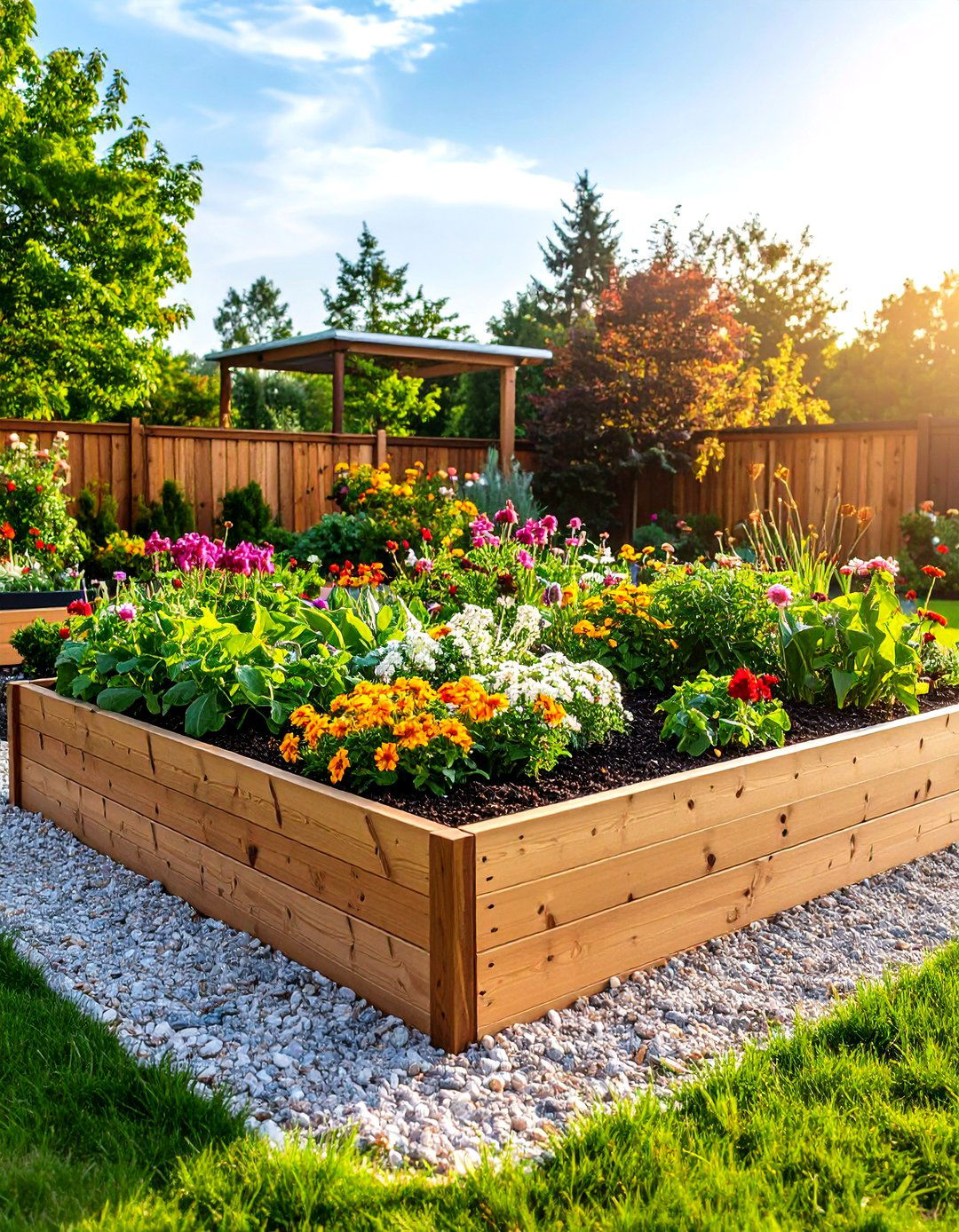
A raised wooden flower bed simplifies soil prep, keeps weeds out, and spares your back. Cut lumber to 6- to 12-inch heights, screw corners together, staple hardware cloth under the frame to deter burrowers, then line the sides with landscape fabric. Add a 50/50 mix of compost and topsoil, ensuring at least one drainage hole every two feet; pack coarse gravel around the holes so water never stagnates. Mulch lightly, install drip irrigation, and you’ll gain a tidy, ergonomic space that warms quickly in spring and yields lush blooms with minimal fuss.
2. Color-Themed Cottage Flower Bed Burst
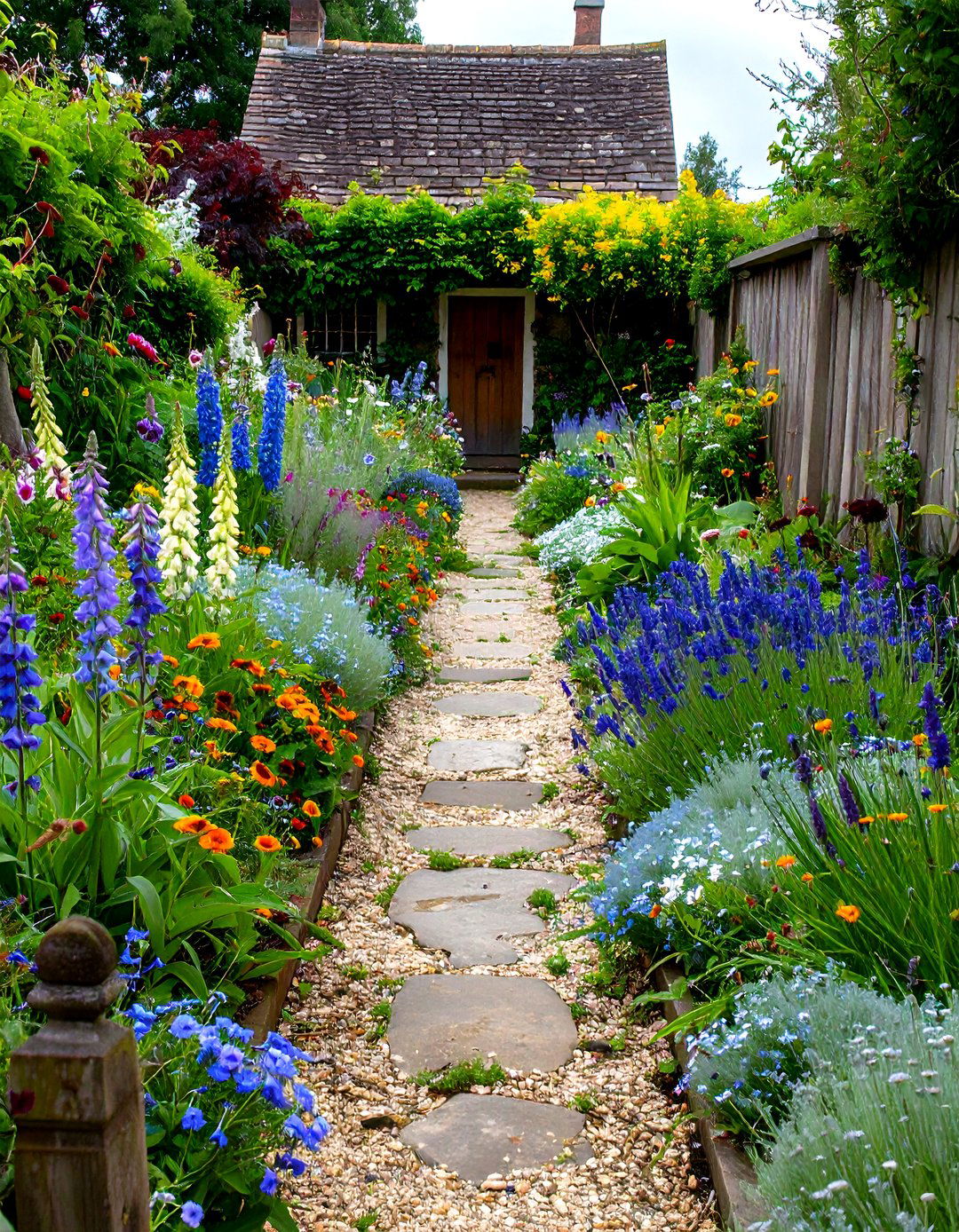
Take cottage-garden exuberance and tame it with a color scheme: plant drifts of foxglove, salvia, and delphinium in adjacent shades of blue and violet for a soothing ribbon of cool hues. Anchor the palette with silvery foliage like artemisia, then scatter self-sowing annuals — nigella or larkspur — to keep the bed evolving year after year. Repeat colors at intervals so the eye flows naturally, and edge paths with low alyssum to scent every stroll.
3. Pollinator-Friendly Flower Bed Matrix
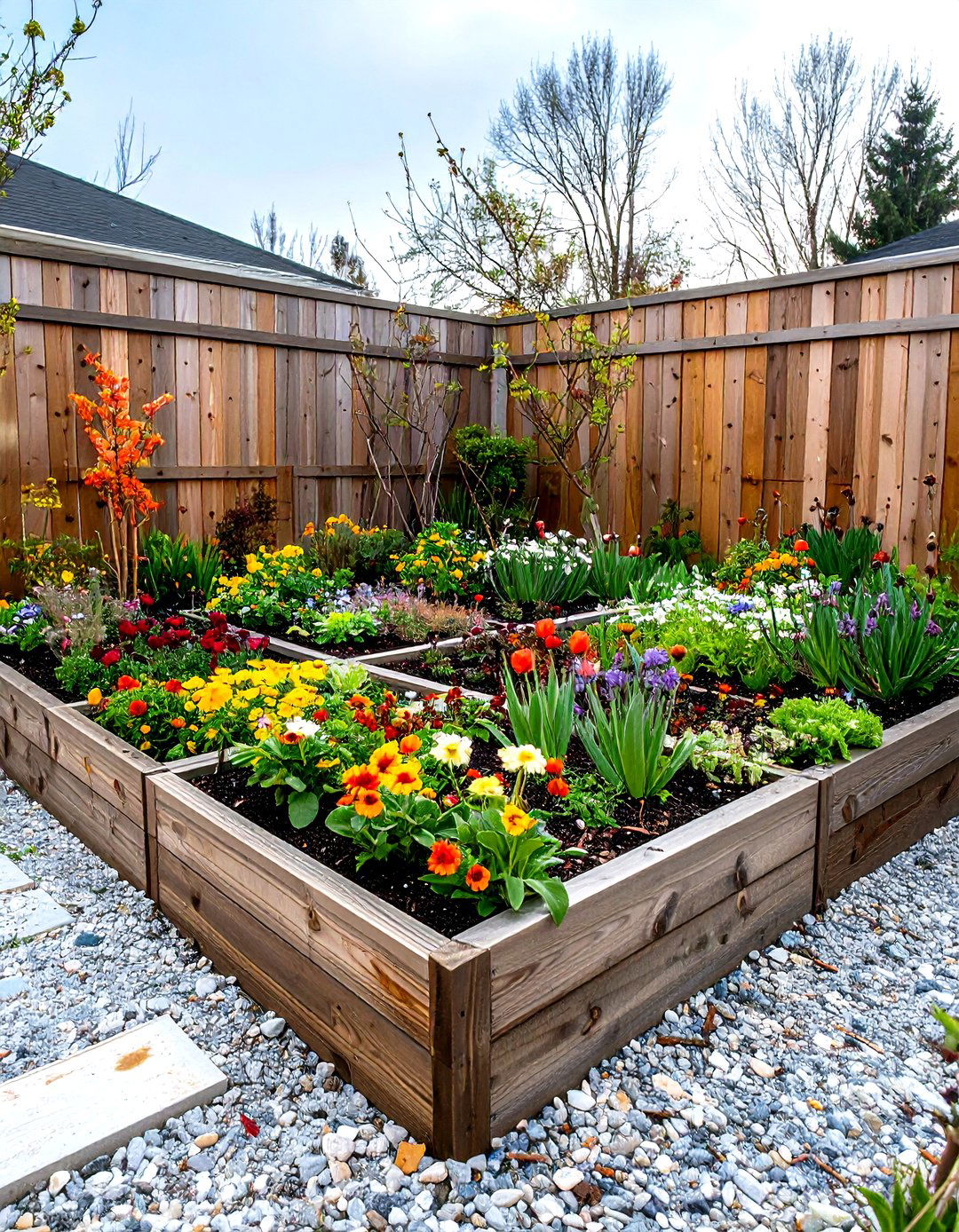
Design a 3 × 3 × 3 pattern: three native species blooming in spring (violet, penstemon, phlox) , three in summer (coneflower, bee balm, milkweed) , and three in fall (goldenrod, aster, helianthus). Group each season’s trio in blocks so insects always find massed nectar. Leave hollow stems over winter for solitary bees, and skip pesticides — beneficial hoverflies will patrol aphids for you.
4. Moon Garden Flower Bed Glow

For after-dark drama, dedicate a semicircular moon garden flower bed near a seating area. Combine white phlox, night-blooming evening primrose, variegated lamb’s ear, and silver artemisia so the foliage glimmers in twilight. Add sweet alyssum for fragrance that intensifies as temperatures drop, then place a solar uplight behind tall Nicotiana to throw ghostly silhouettes across the lawn.
5. Drought-Tolerant Xeriscape Flower Bed
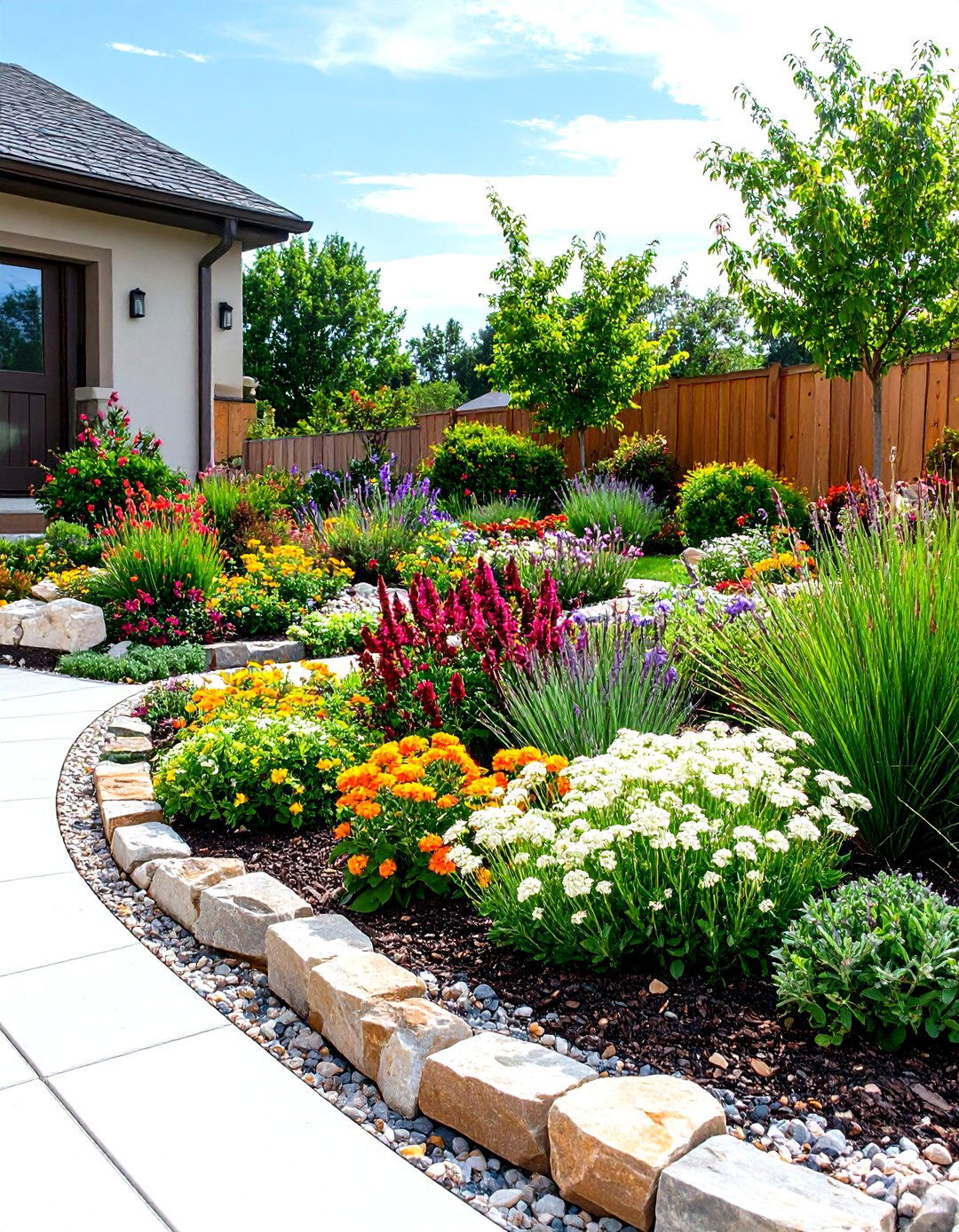
Replace thirst-heavy lawns with a gravel-mulched xeriscape flower bed featuring penstemon, yarrow, Russian sage, and agastache. Grade the bed into gentle swales so brief rains sink in, top-dress with 3 inches of crushed granite to curb evaporation, and install inline drip emitters pegged beneath the mulch. Once roots establish, you’ll cut watering by up to 60 percent while enjoying waves of color that pollinators adore.
6. Vertical Pallet Flower Bed for Small Spaces

Salvaged shipping pallets become instant vertical flower beds: staple landscape fabric to the back and sides, fill with potting mix, and slot trailing petunias, violas, or strawberries between slats. Lean the pallet against a south-facing wall, water from the top until plants knit the soil together, then rotate crops seasonally — leafy greens in cool months, bright annuals in summer — to keep a postage-stamp porch bursting with life.
7. Foundation Flower Bed for Curb Appeal
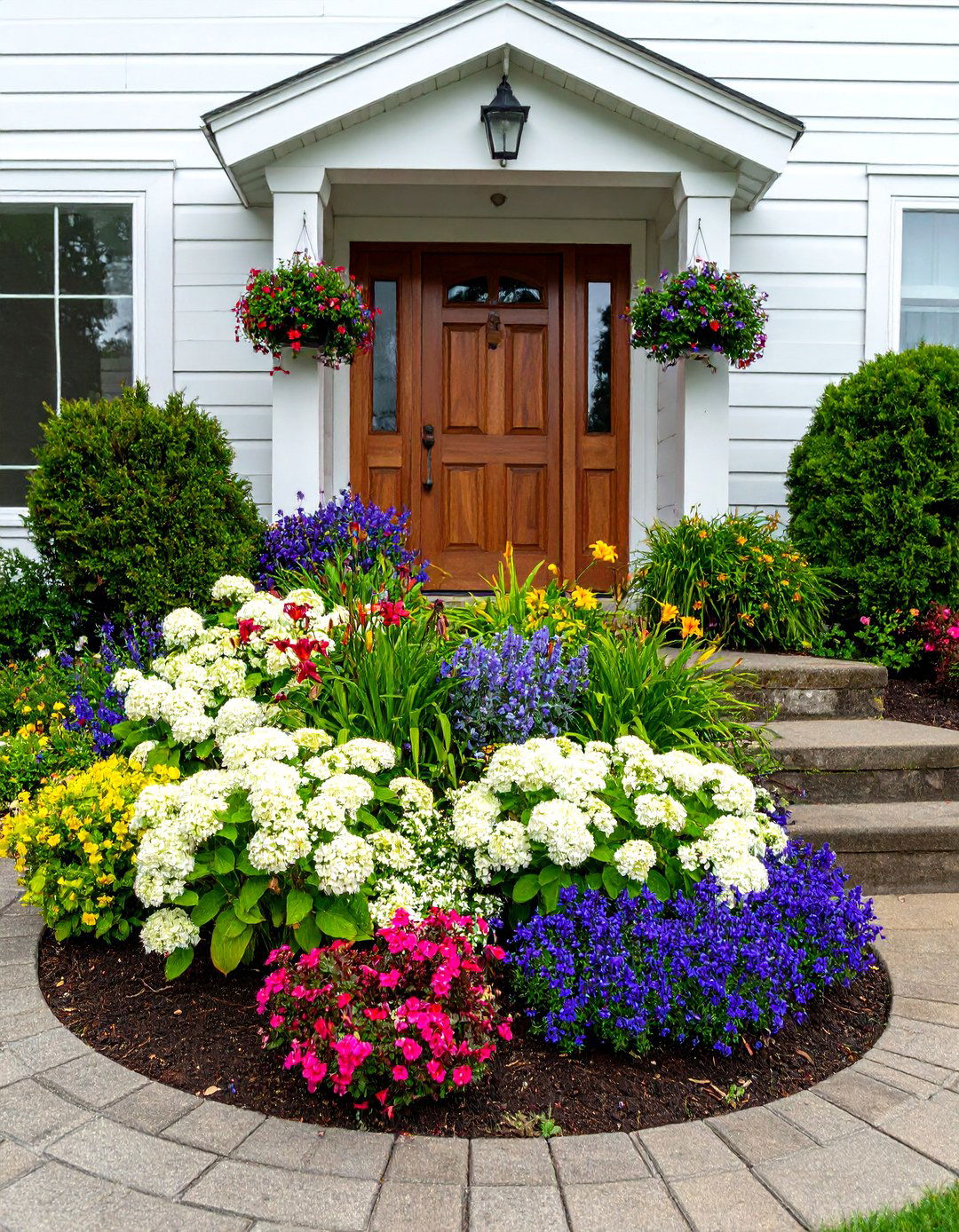
Soften hard masonry with a layered foundation flower bed: stagger evergreen shrubs at the back, then mass midsize hydrangeas, hostas, or daylilies, and finish with low annual edging like begonias or impatiens. Repeat plant forms on both sides of the entry to frame your doorway, and curve the bed’s outline slightly; gentle lines trick the eye into seeing a larger, more inviting façade.
8. Sensory Flower Bed Engaging All Senses
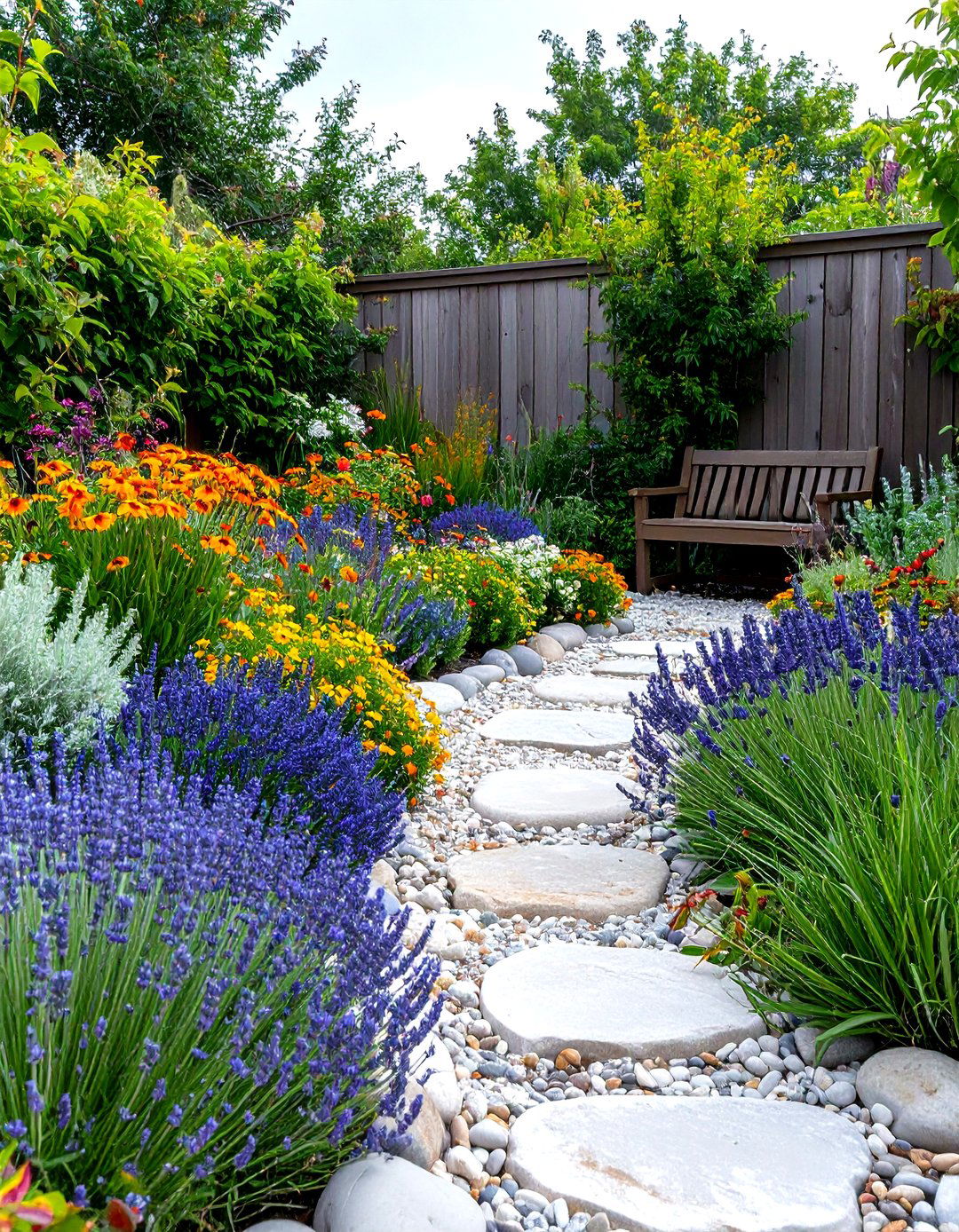
Transform gardening into therapy by mixing textures, scents, and sounds. Weave velvety lamb’s ear beside spiky blue fescue, punctuate rows with fragrant rosemary and jasmine, and include wind-rattling ornamental millet for auditory intrigue. Add a smooth path of river pebbles so bare feet can explore safely, and position a bench for mindfulness breaks amid the multisensory feast.
9. Edible Flower Bed with Herbs & Blossoms
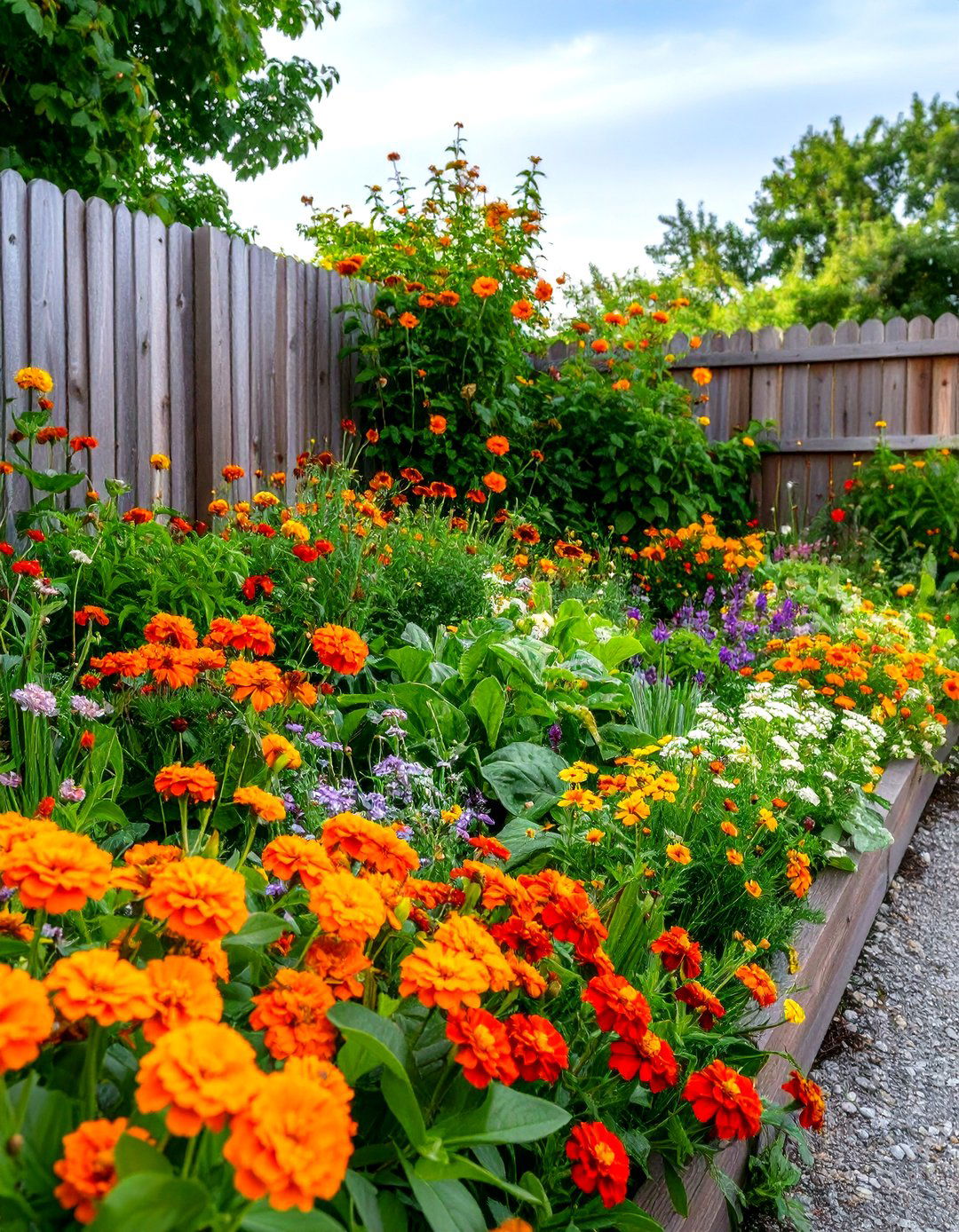
Pair beauty with bounty: border the flower bed with calendula and nasturtium — both edible and aphid-luring — while interplanting basil, dill, and chives among marigolds and zinnias. Rotate crops yearly to foil pests, deadhead calendula often to prolong bloom, and harvest nasturtium leaves young for peppery salads that mirror the bed’s fiery tones.
10. Perennial Border Flower Bed All-Season
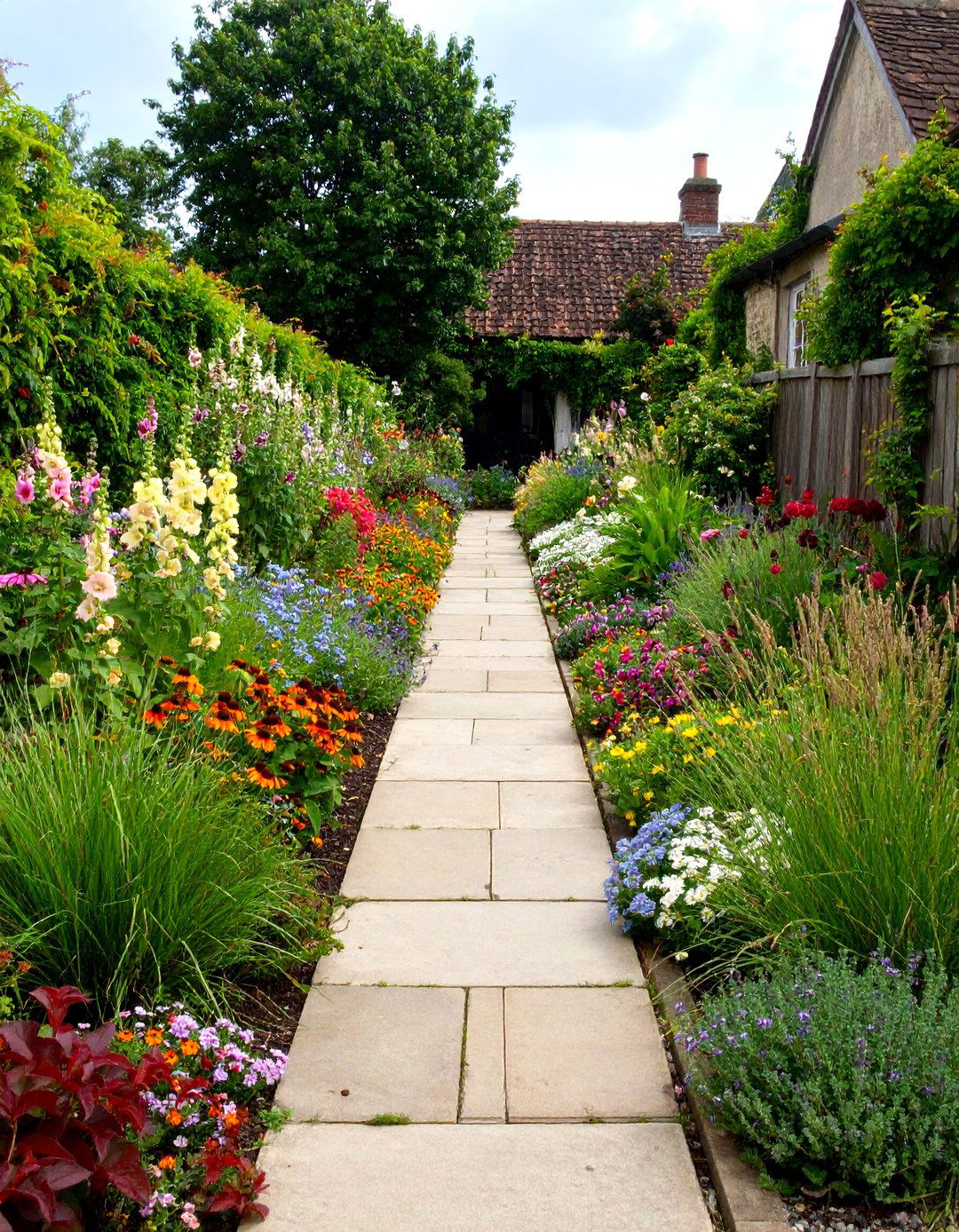
For a classic English-style border, layer tallest plants (Joe-Pye weed, hollyhock) in back, mid-height bloomers (echinacea, phlox) in the middle, and prostrate groundcovers (creeping thyme) up front. Mix grasses like miscanthus for late-season movement, and stagger bloom times so something flowers from April to October. Divide clumps every three years to keep vigor high and beds tidy.
11. Shade-Loving Flower Bed Under Trees
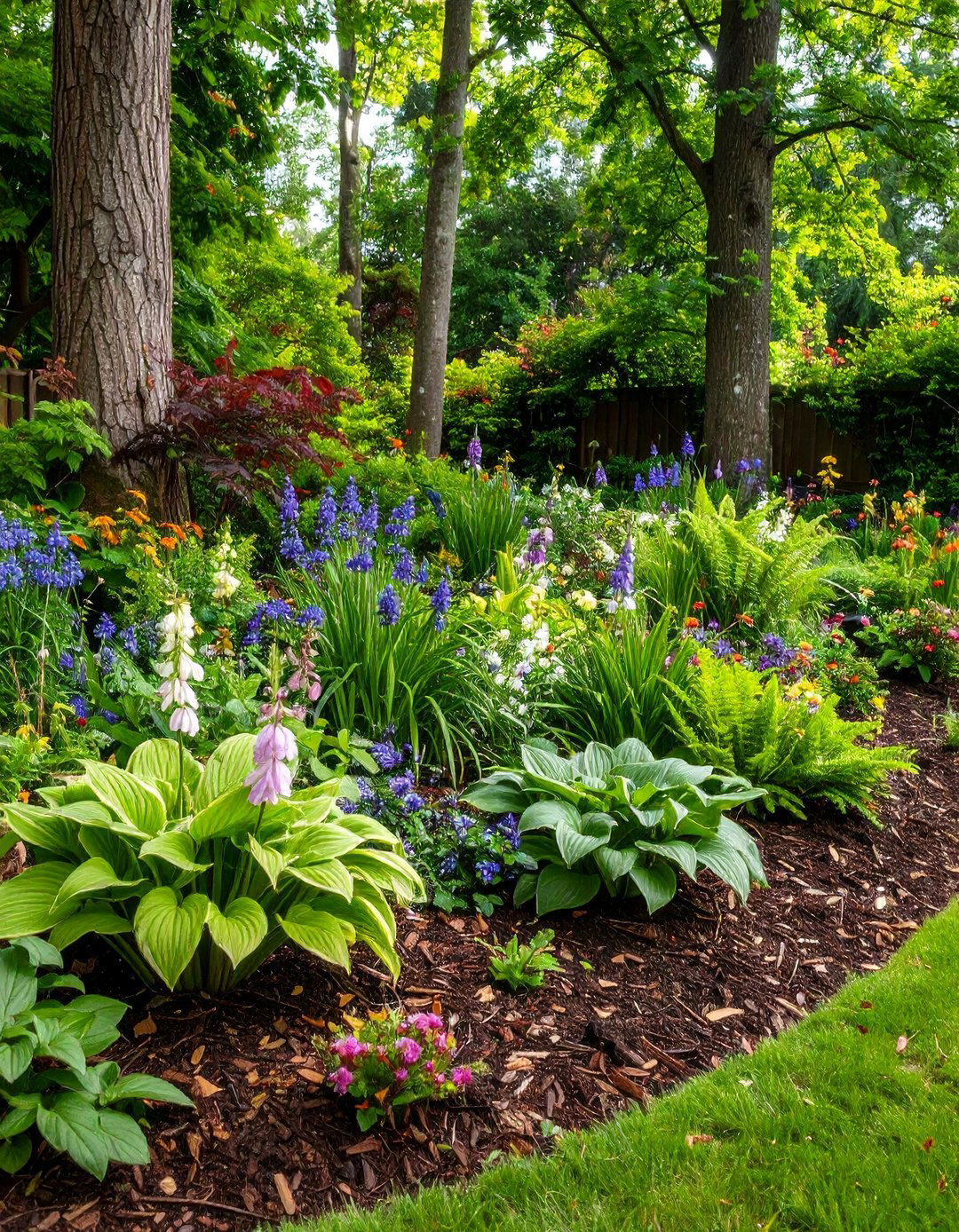
Turn dappled ground beneath mature trees into a lush shade flower bed by combining hostas, astilbes, and hellebores. Add coral bells for foliage contrast and fill gaps with evergreen ferns that provide winter structure. Top-dress annually with leaf mold to mimic forest duff, and use drip irrigation rings to water slowly without compacting roots.
12. Succulent Rock Flower Bed Drainage
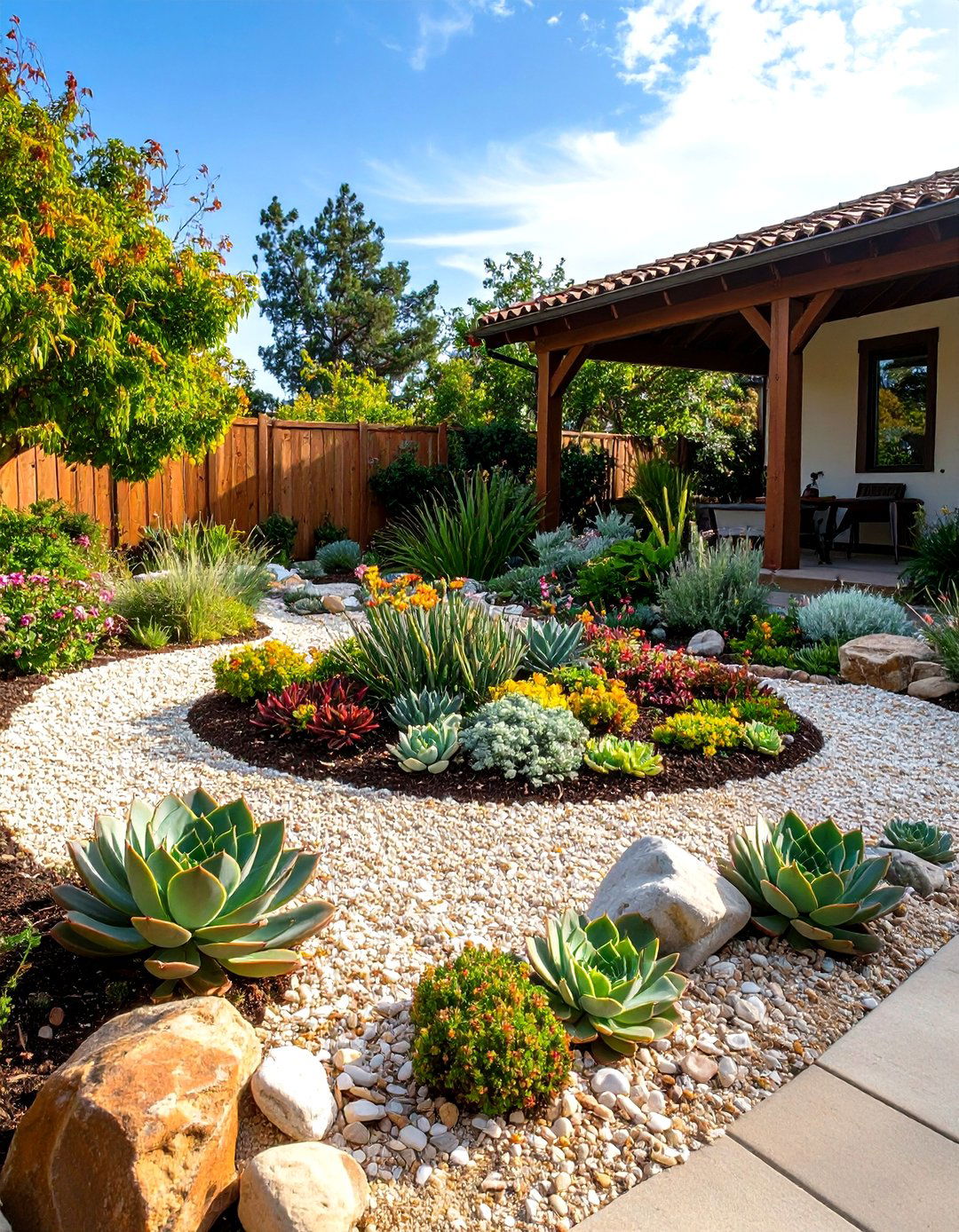
Create a Mediterranean vibe with a mound of sandy soil capped by rocks, then tuck in sedum, echeveria, and ice plant. Sloping berms shed water, preventing rot, while stones store heat for nighttime warmth. Finish with crushed shell mulch that echoes beach glass, and let gaps widen naturally as succulents produce offsets.
13. Butterfly Flower Bed Oasis
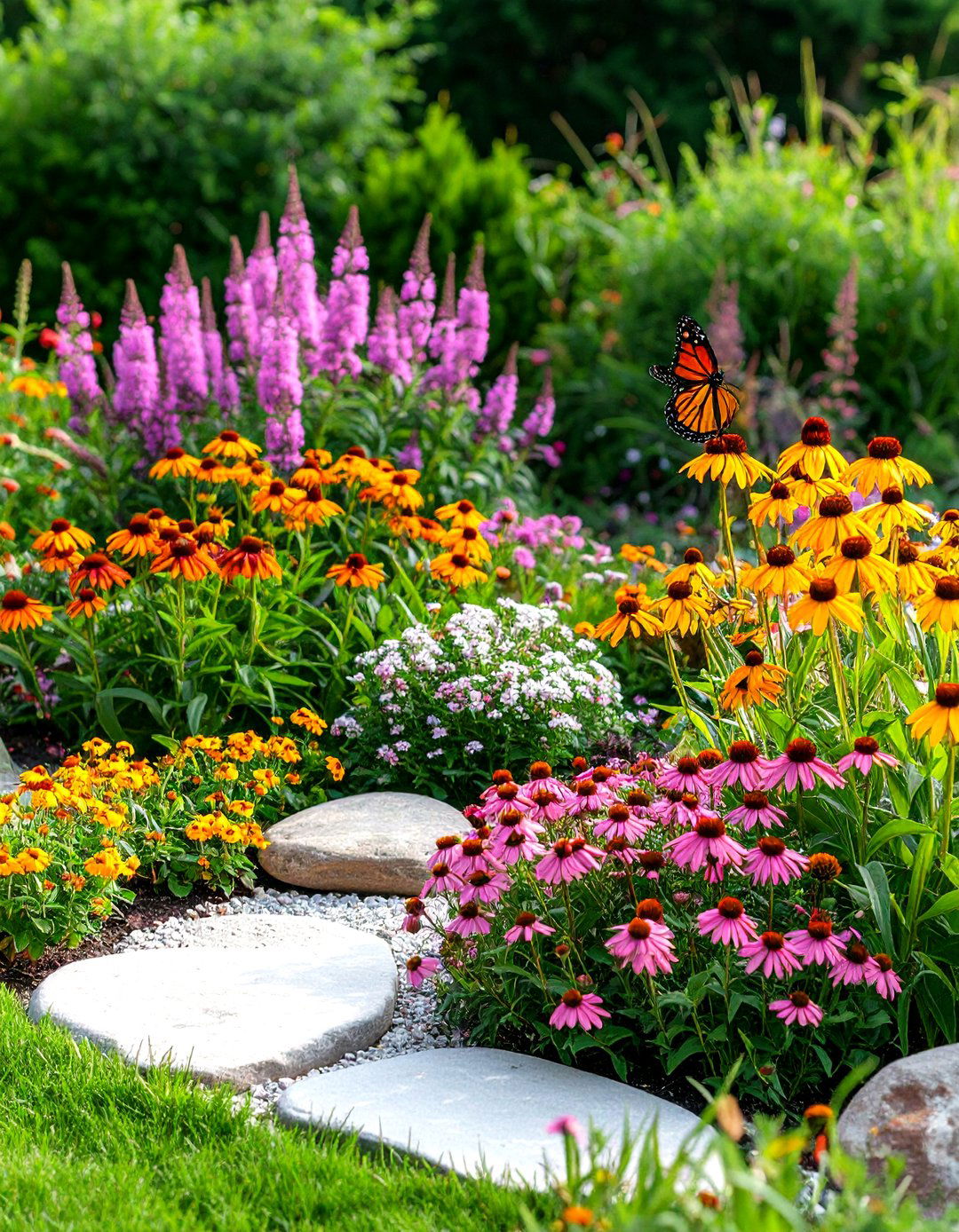
Arrange milkweed, coneflower, and liatris in sunny blocks so butterflies can locate nectar from above. Include flat stones for basking and a shallow dish of damp sand for mineral “puddling. ” Avoid pesticide drift, and leave some stems standing through winter; chrysalides often hang inconspicuously amid the stalks.
14. Container Cluster Flower Bed Flexibility
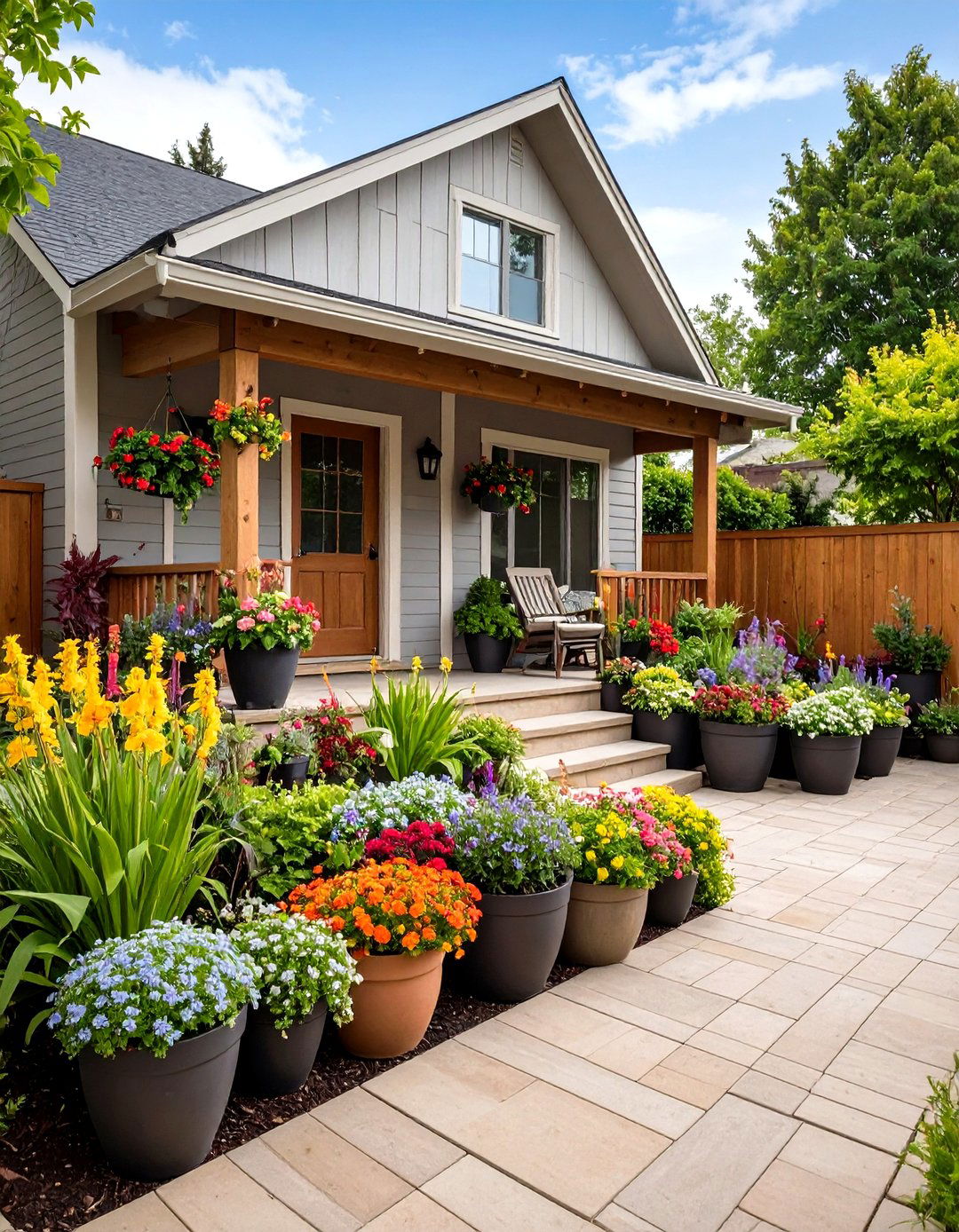
If digging space is scarce, group large pots into a faux flower bed on patio pavers. Use the “thriller-filler-spiller” formula: a tall canna or dwarf tree as focal thriller, mid-height coleus for filler, and trailing bacopa as spiller. Elevate rear containers on overturned crates so every layer shows, and shuffle pots seasonally to refresh the display without replanting the ground.
15. Bermed Wave Flower Bed Elevation
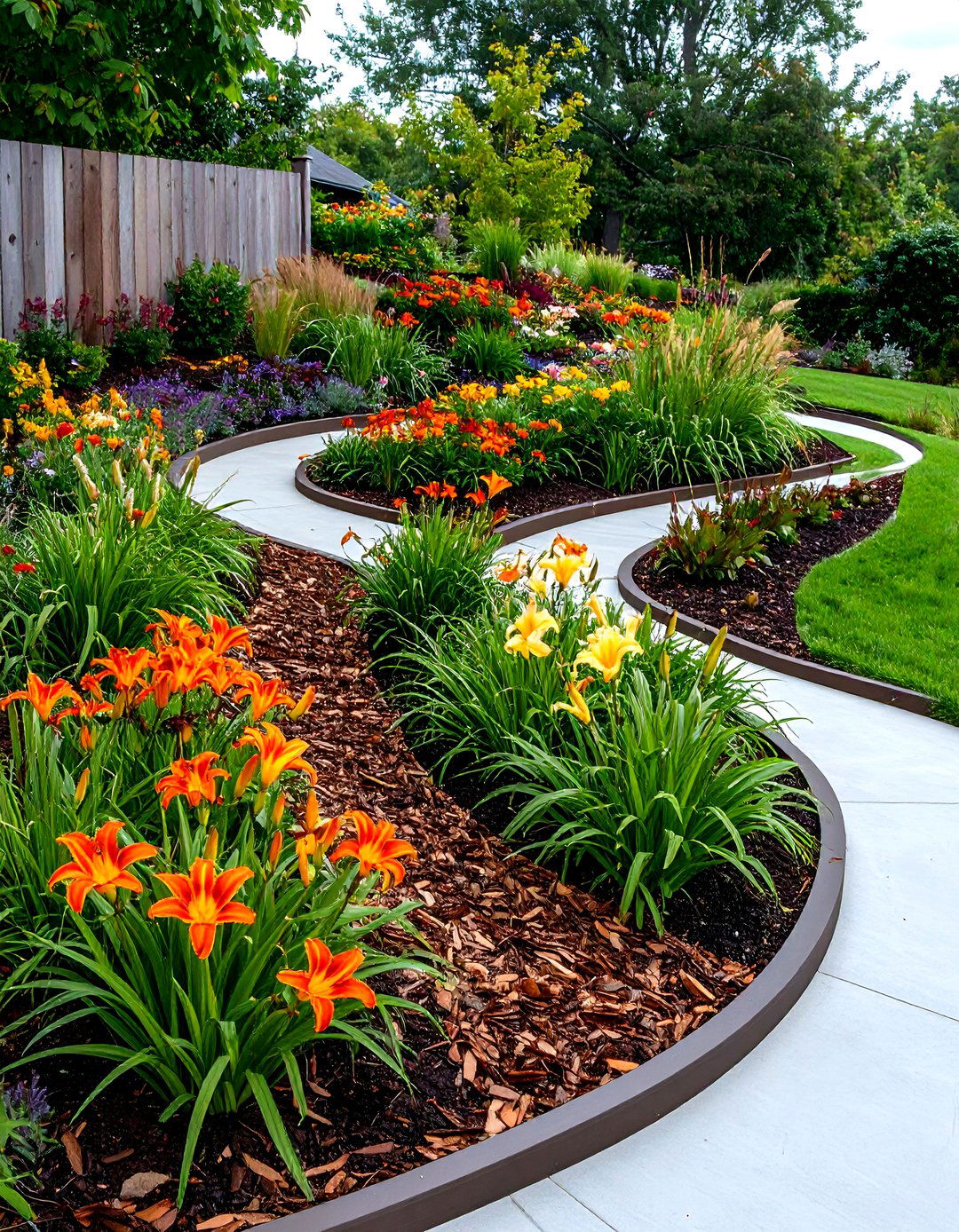
Shaping soil into sinuous berms 18 inches high adds instant topography, improves drainage, and reveals plants from multiple viewpoints. Position drought-tough grasses on crests and moisture-tolerant perennials like daylily in troughs, then mulch with shredded bark to hold contours after heavy rain.
16. Fairy Garden Flower Bed Magic

Scatter miniature cottages, twig trellises, and pebble paths among low-growing thyme, baby tears, and dwarf dianthus to craft a storybook scene. Tuck LED tea lights into upturned acorn caps for twilight sparkle, and invite neighborhood kids to leave tiny notes or painted stones, nurturing curiosity and stewardship.
17. Coastal Flower Bed with Salt-Tolerant Plants
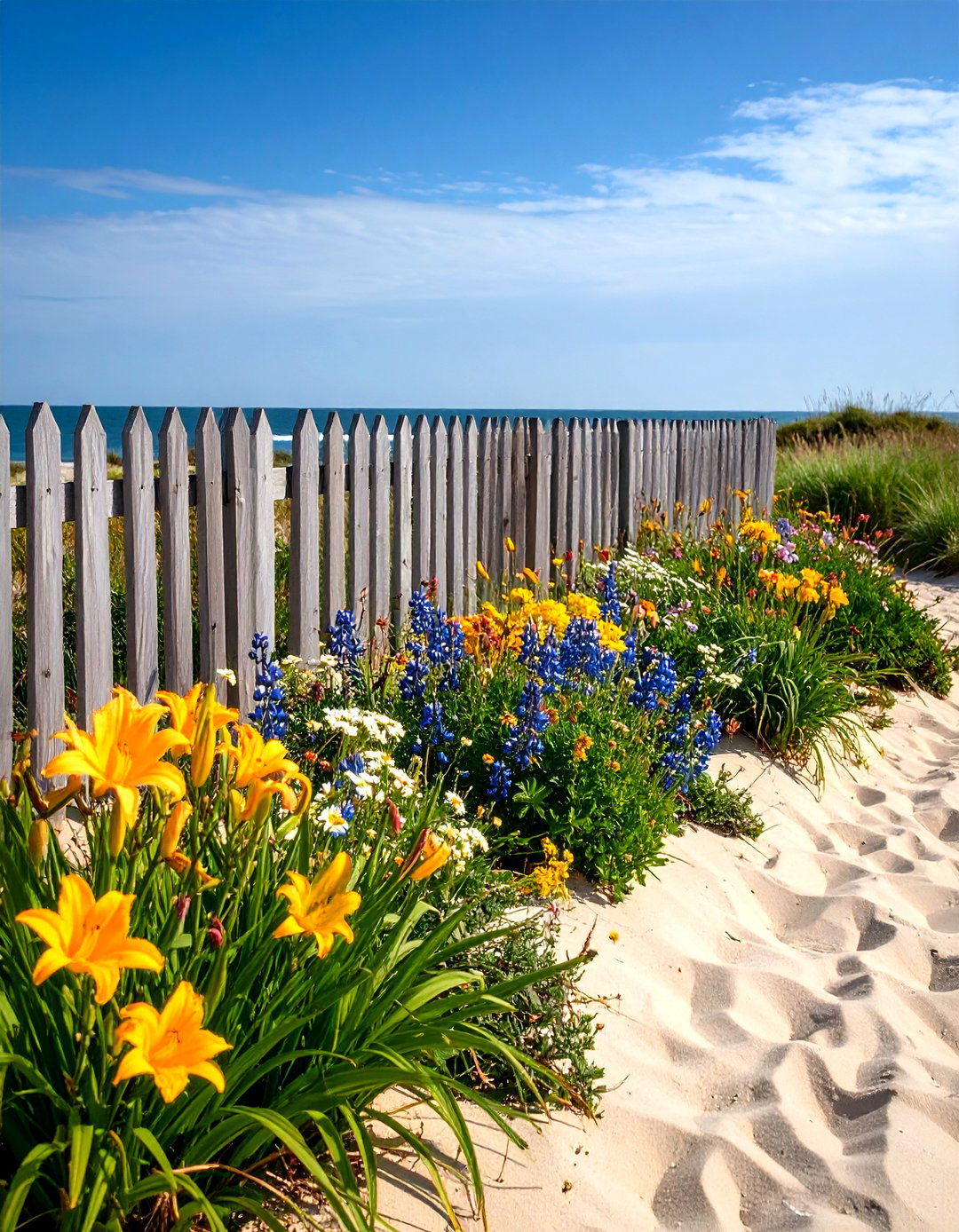
Near seashore or de-iced roadways, build a coastal flower bed using salt-tolerant perennials such as daylily, seaside goldenrod, and switchgrass. Amend sandy soil with compost to improve moisture retention, and situate a windbreak fence on the windward side to shield blooms from abrasive spray.
18. Fragrance-Focus Flower Bed Aromatherapy
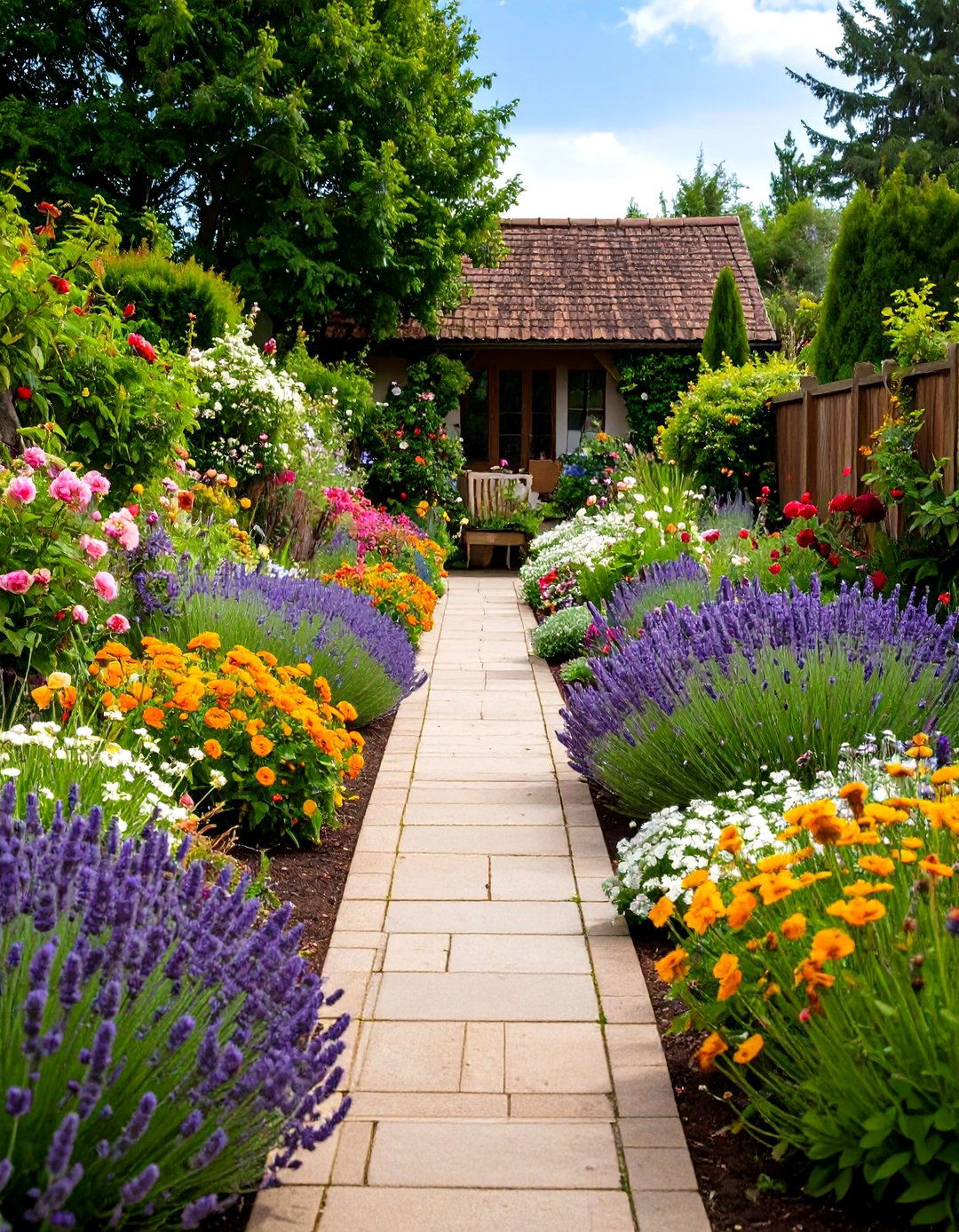
Mass plantings of lavender, rosa rugosa, and sweet alyssum turn a walkway border into an open-air diffuser. Space plants so scented air pockets overlap, and harvest blooms for sachets without diminishing the display. Evening strolls feel luxurious when night-release aromatics like nicotiana mingle with daytime staples.
19. Native Plant Flower Bed Biodiversity Boost
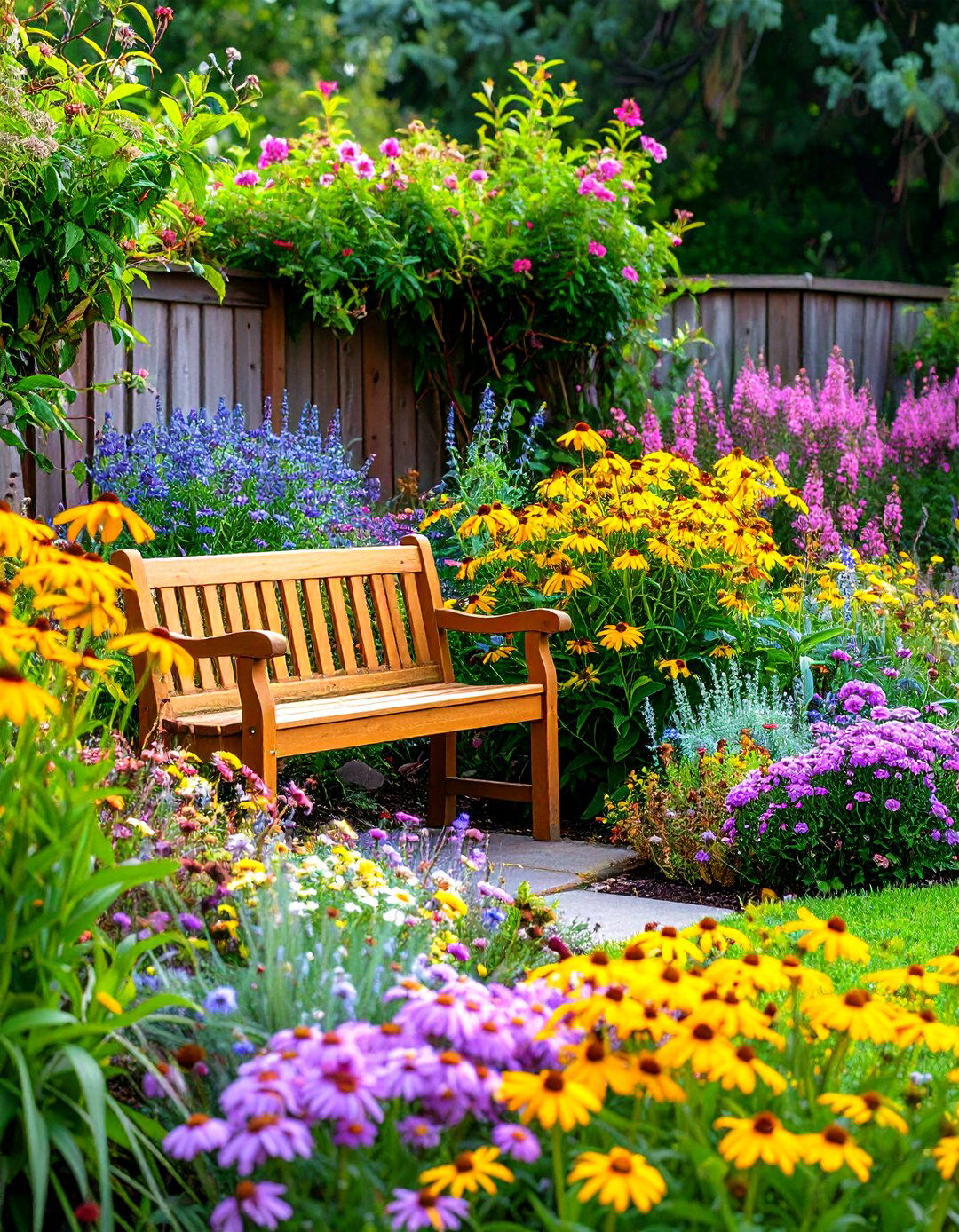
Swap exotics for region-appropriate natives: golden alexanders in spring, blazing star in summer, and aster in fall. Gardens with 70 percent native cover support far more birds and butterflies than turf alone. Native flora also needs less fertilizer and pesticide, improving soil health while lowering labor.
20. Knot-Style Formal Flower Bed Pattern
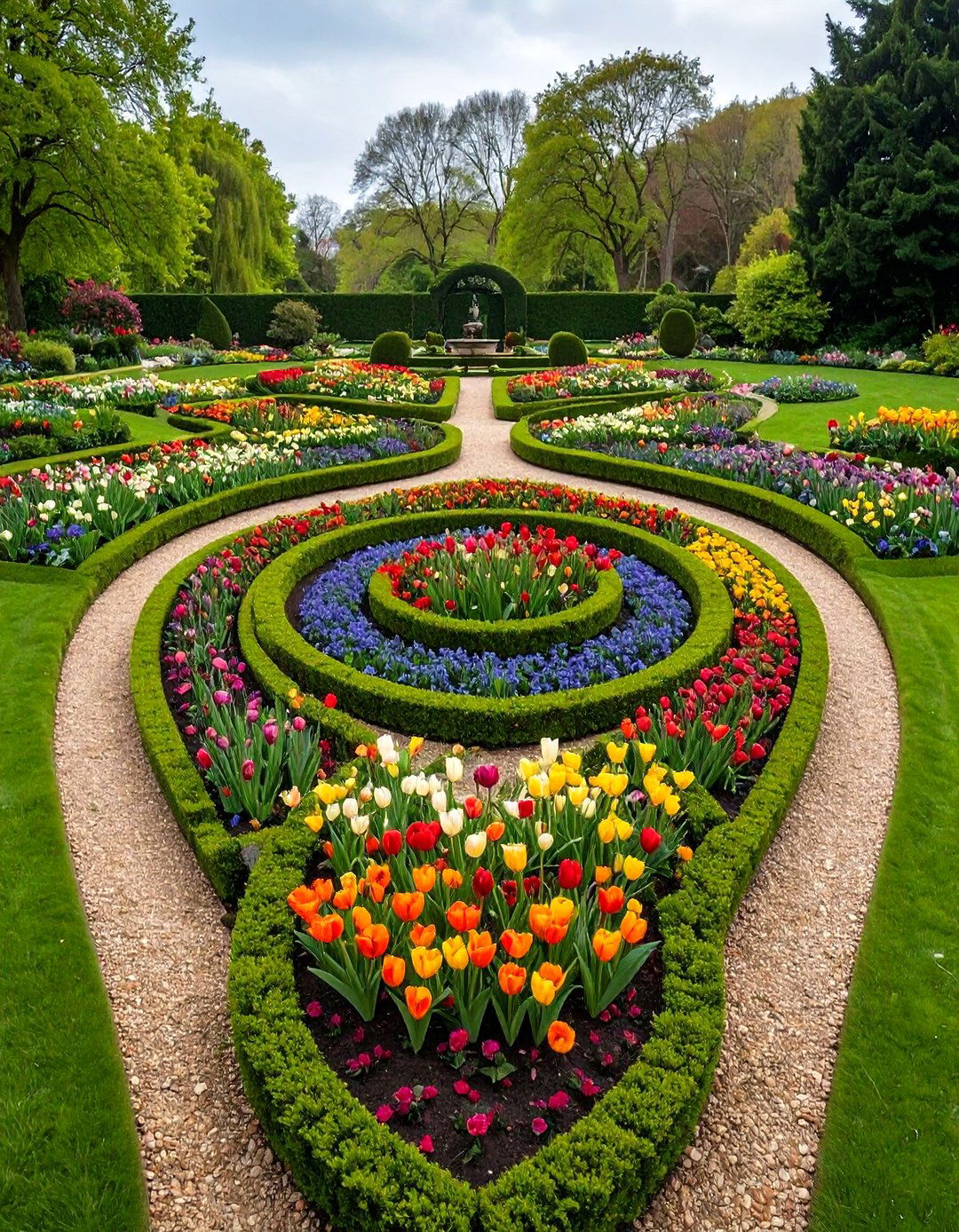
Channel Tudor elegance by clipping dwarf boxwood or thyme into interlacing ribbons only 6 inches tall, then filling pockets with violas or dwarf tulips for seasonal color. Keep hedges sharply trimmed to preserve crisp geometry, and install a gravel path around the bed so viewers appreciate the pattern from every angle.
21. Rain Garden Flower Bed Water Management

Site a shallow basin at least 10 feet from the house, dip it 6 inches below grade, and plant moisture-loving natives like swamp milkweed and blue flag iris. The bed catches roof runoff, filtering pollutants before water seeps underground, reducing flooding while delivering lush bloom after storms.
22. Winter-Interest Flower Bed Structure

Select shrubs with colored bark (red twig dogwood) , perennials that keep upright seed heads (echinacea, rudbeckia) , and grasses that swish in the wind. Leave stems intact until early spring — birds feast on remaining seeds, and frost crystals add sparkle when daylight is scarce.
23. Minimalist Monochrome Flower Bed Design
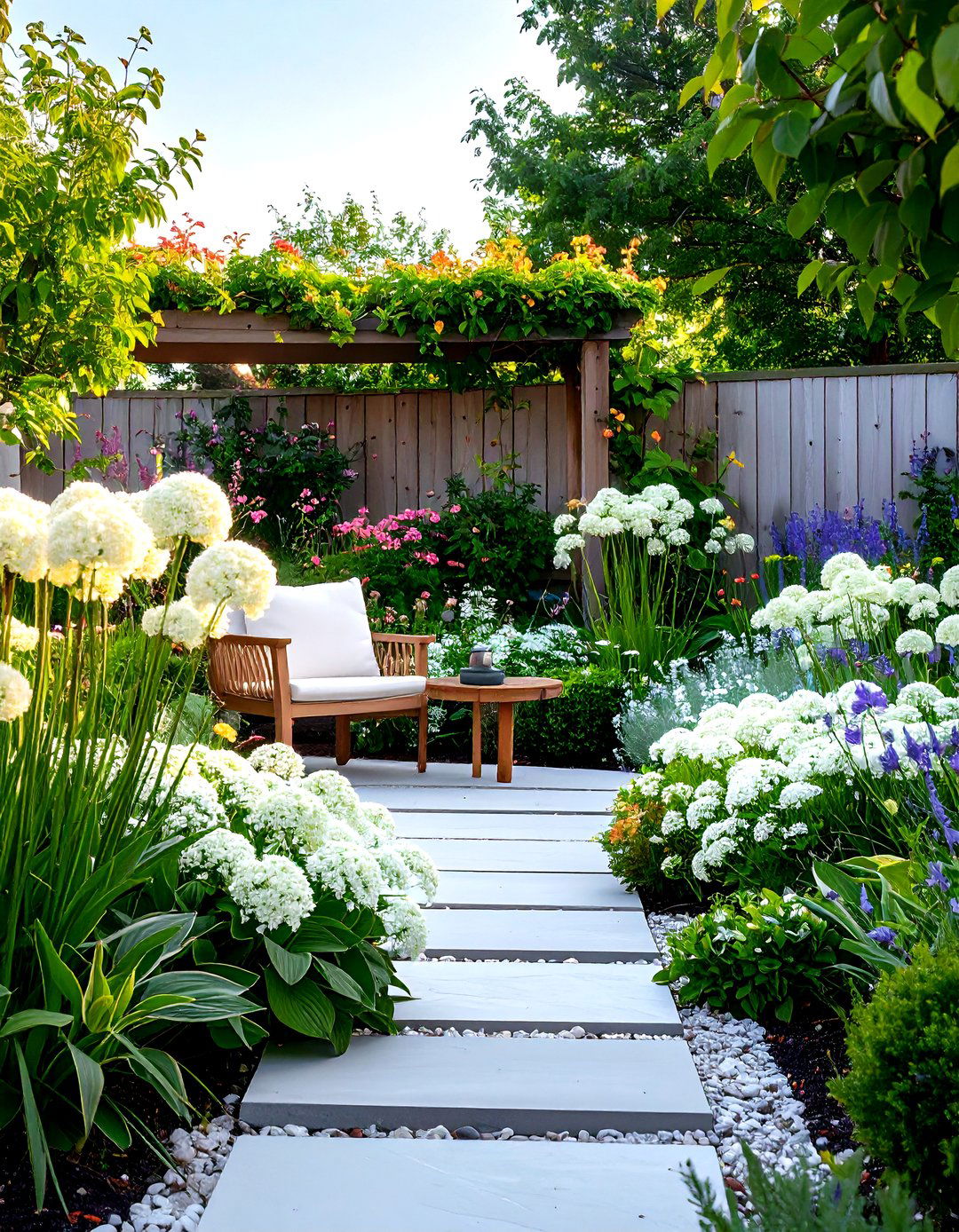
An all-white flower bed can feel serene and spacious. Use contrasting foliage textures — silver lamb’s ear, variegated hosta — and stagger bloom times with bulbs like white allium followed by hydrangea ‘Annabelle’ and moonflower vine. Keep accessories restrained so the restrained palette reads intentional, not unfinished.
24. Kids’ Discovery Flower Bed Interactive
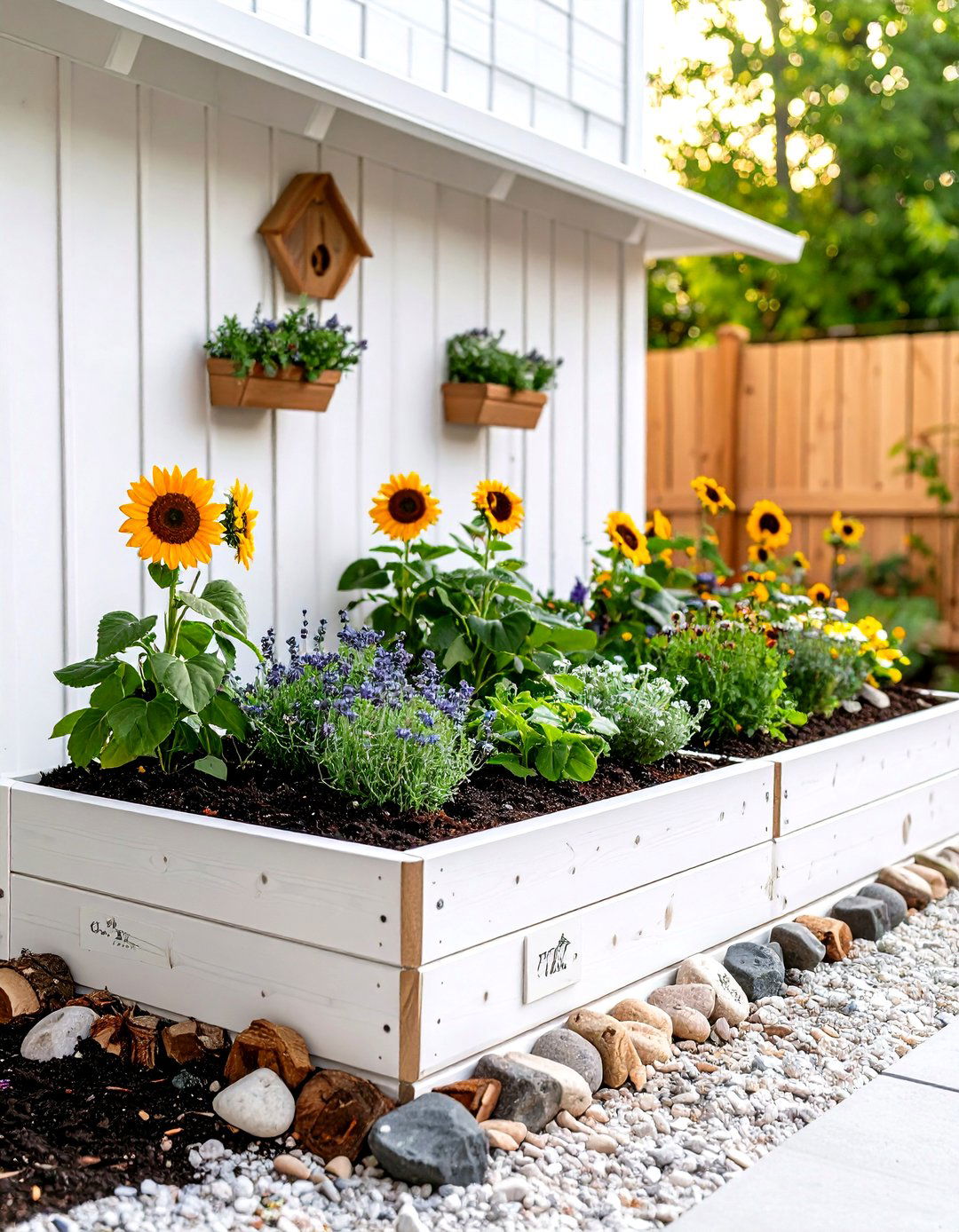
Dedicate a low-maintenance corner to child exploration: sensory plants (lemon balm, fuzzy lamb’s ear) , log edges that double as balance beams, and bug hotels tucked into the mulch. Label plants with hand-painted stones so young gardeners learn names while they play, and refresh curiosity each season with quick-germinating seeds like sunflowers.
25. Seasonal Swap Flower Bed Rotation
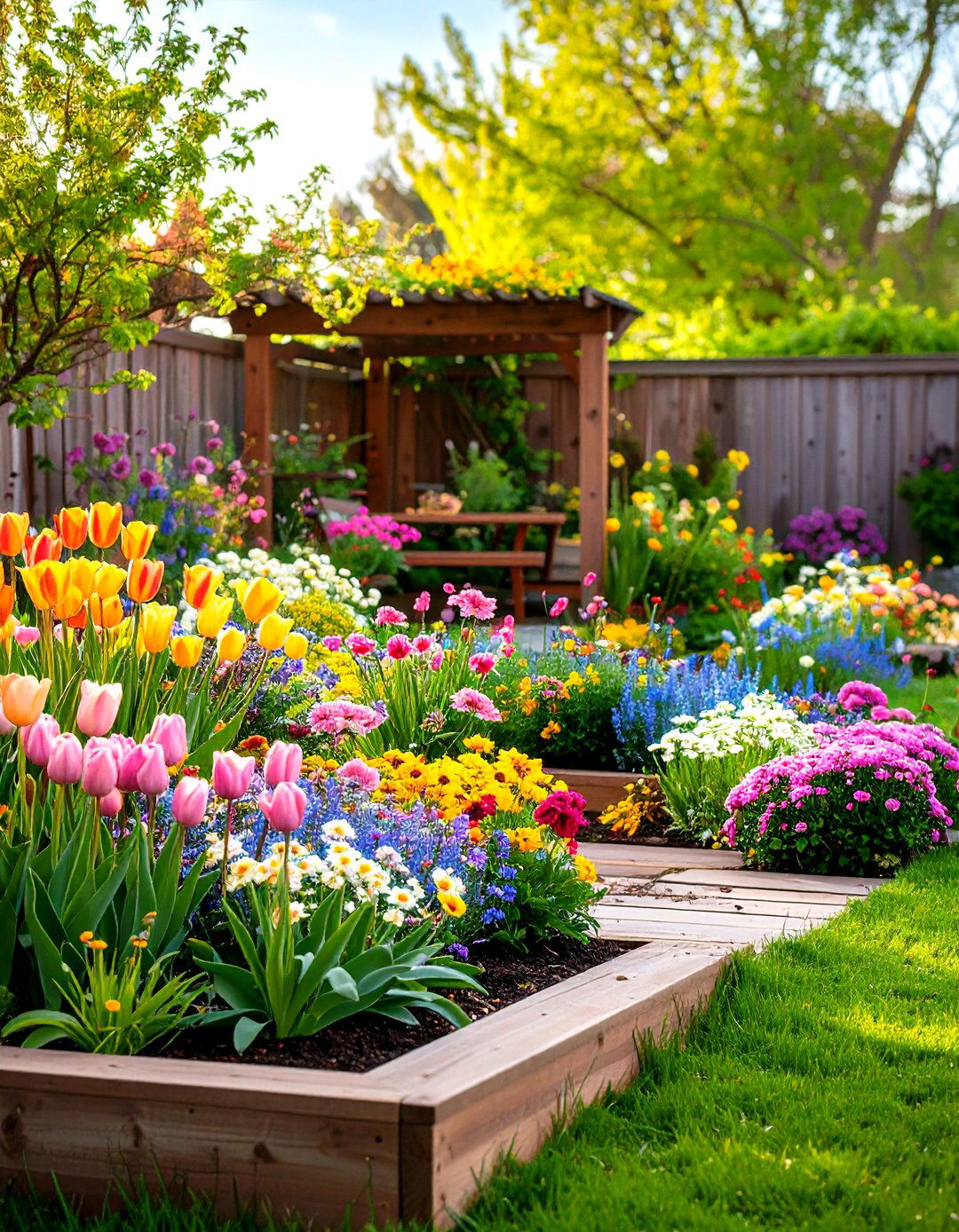
Design a “flip” flower bed round: in autumn, tuck in spring bulbs (tulips, alliums) between clumps of hardy chrysanthemums. After bulbs fade, shear mums to encourage new growth, then sow quick annuals like cosmos to fill gaps by midsummer. This layered timing keeps soil occupied year-round, reduces weeds, and ensures color never skips a beat.
Conclusion:
From structured knot gardens to free-form pollinator havens, these flower bed concepts demonstrate how thoughtful plant pairings, clever layouts, and ecological awareness can multiply both beauty and benefits. By adapting ideas — raised beds for ease, natives for biodiversity, moonlit whites for evening allure — you’ll craft spaces that delight senses, support wildlife, and simplify maintenance. Let your next shovel turn unlock a bed that thrives across seasons and reflects your unique gardening story.


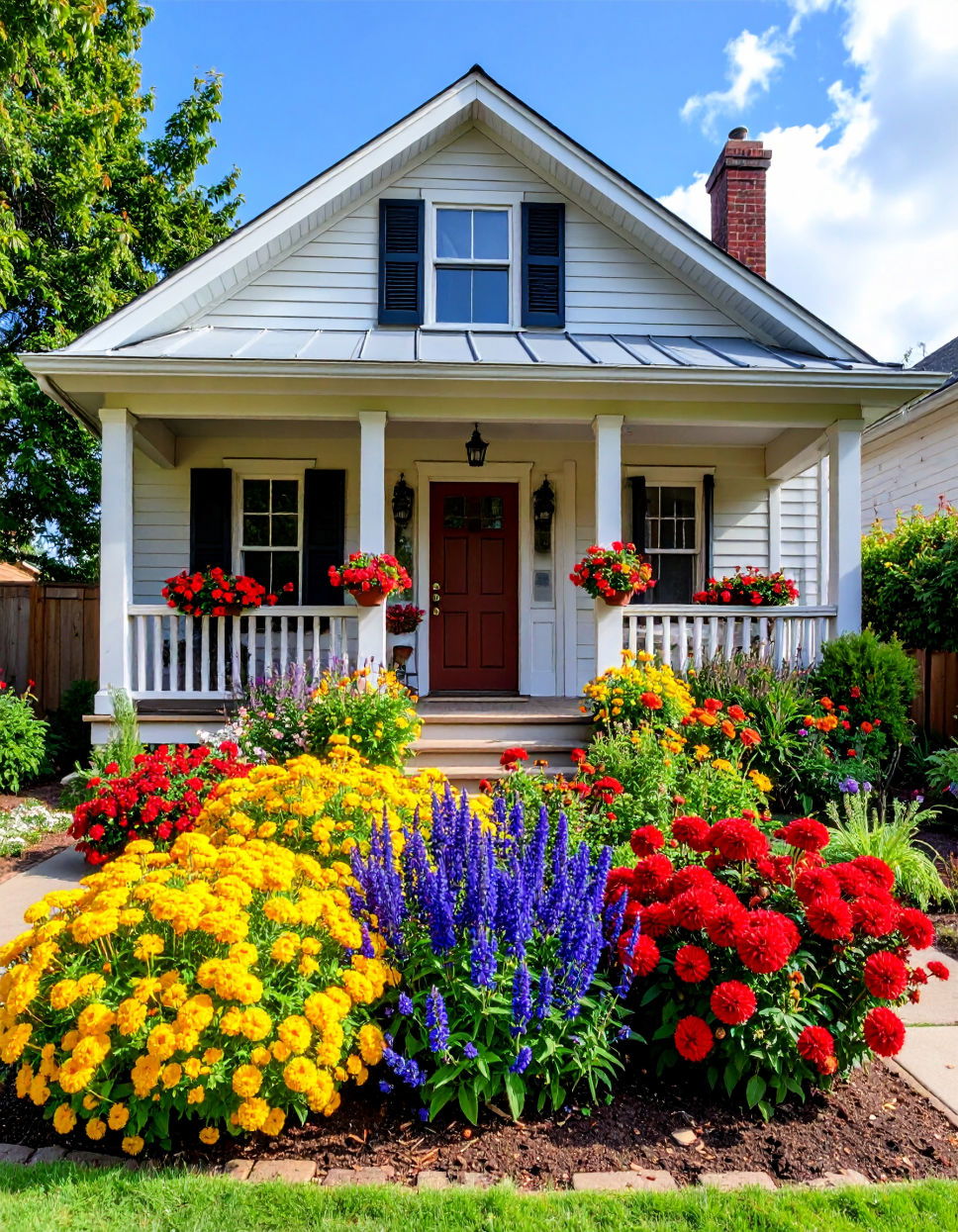
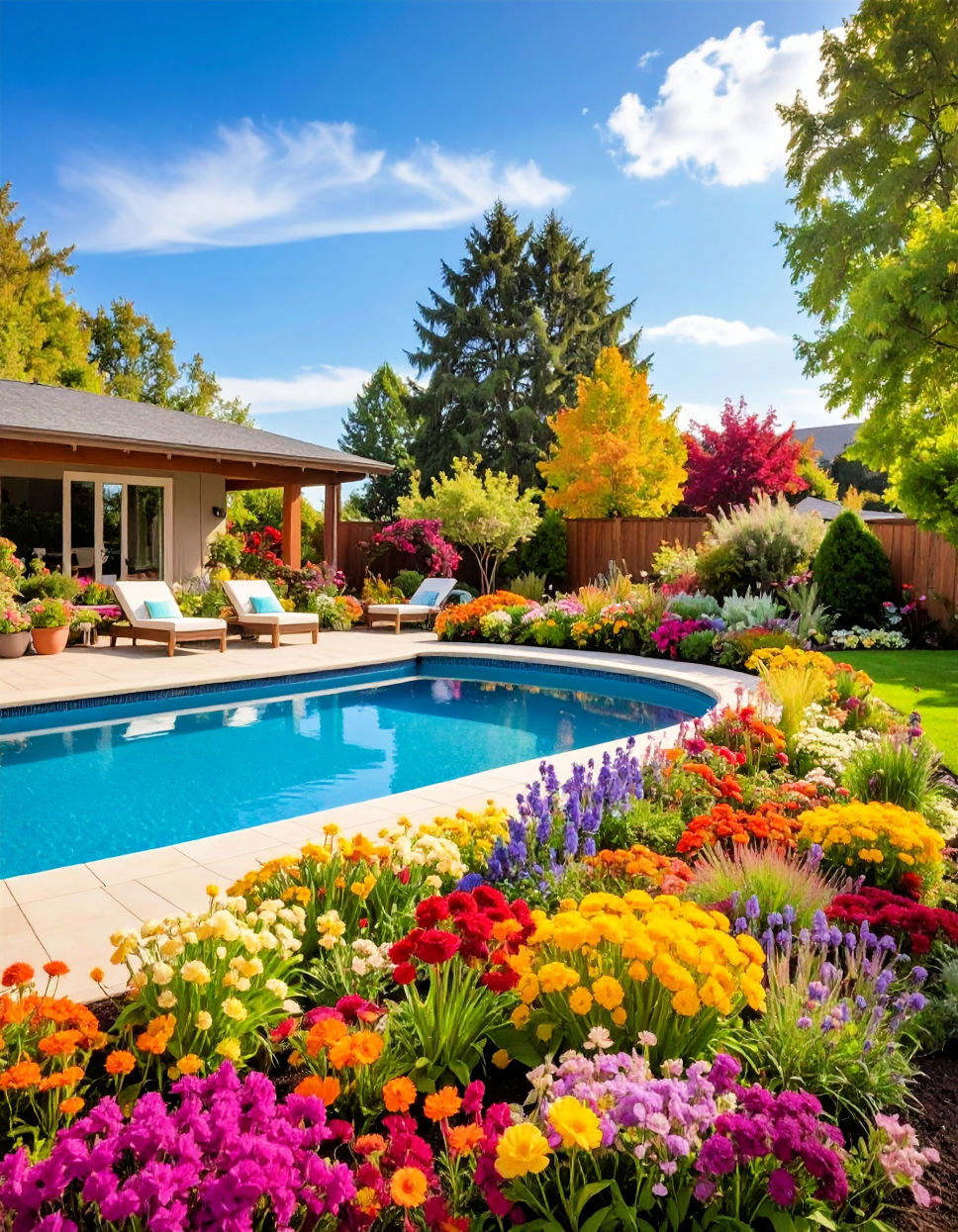
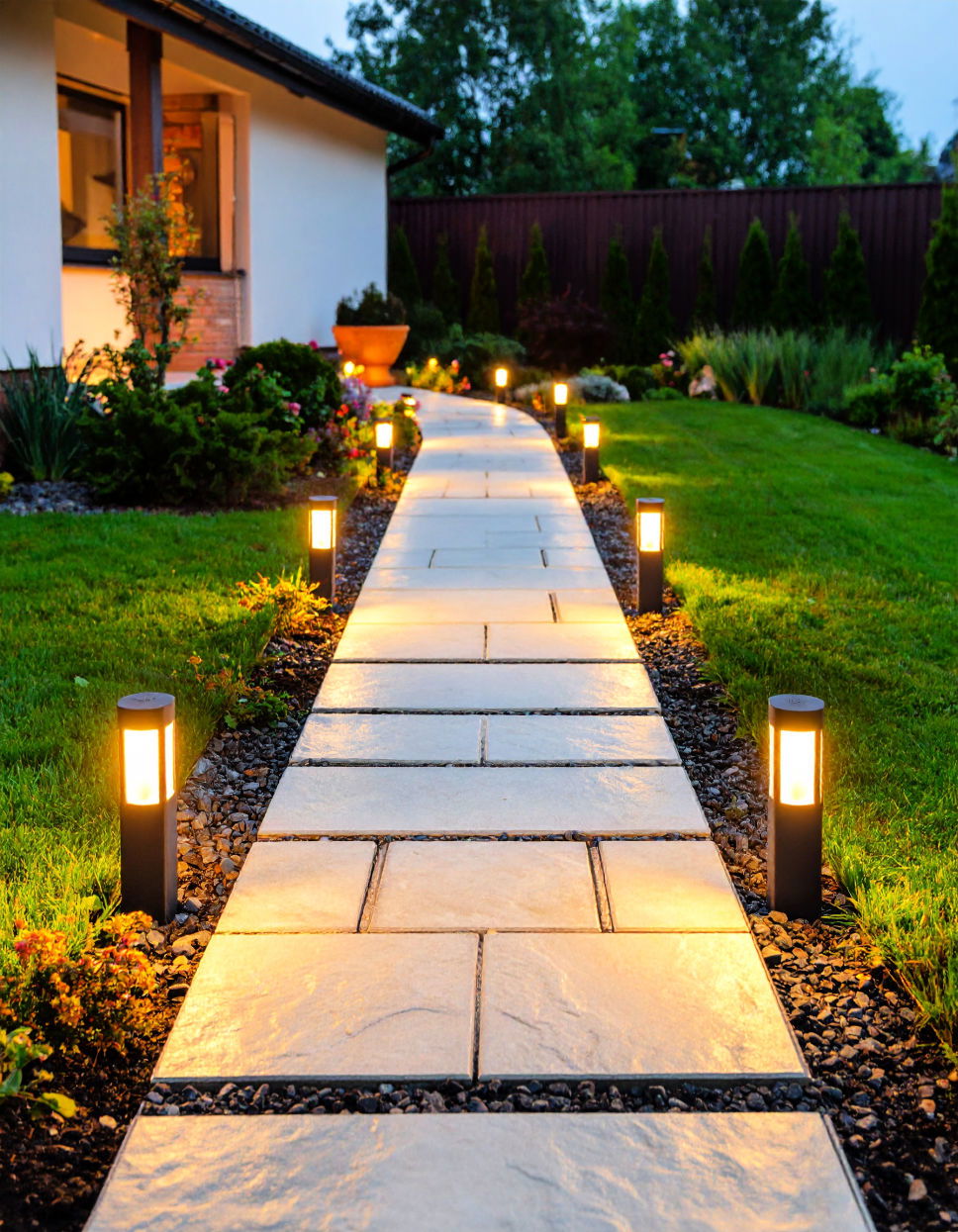
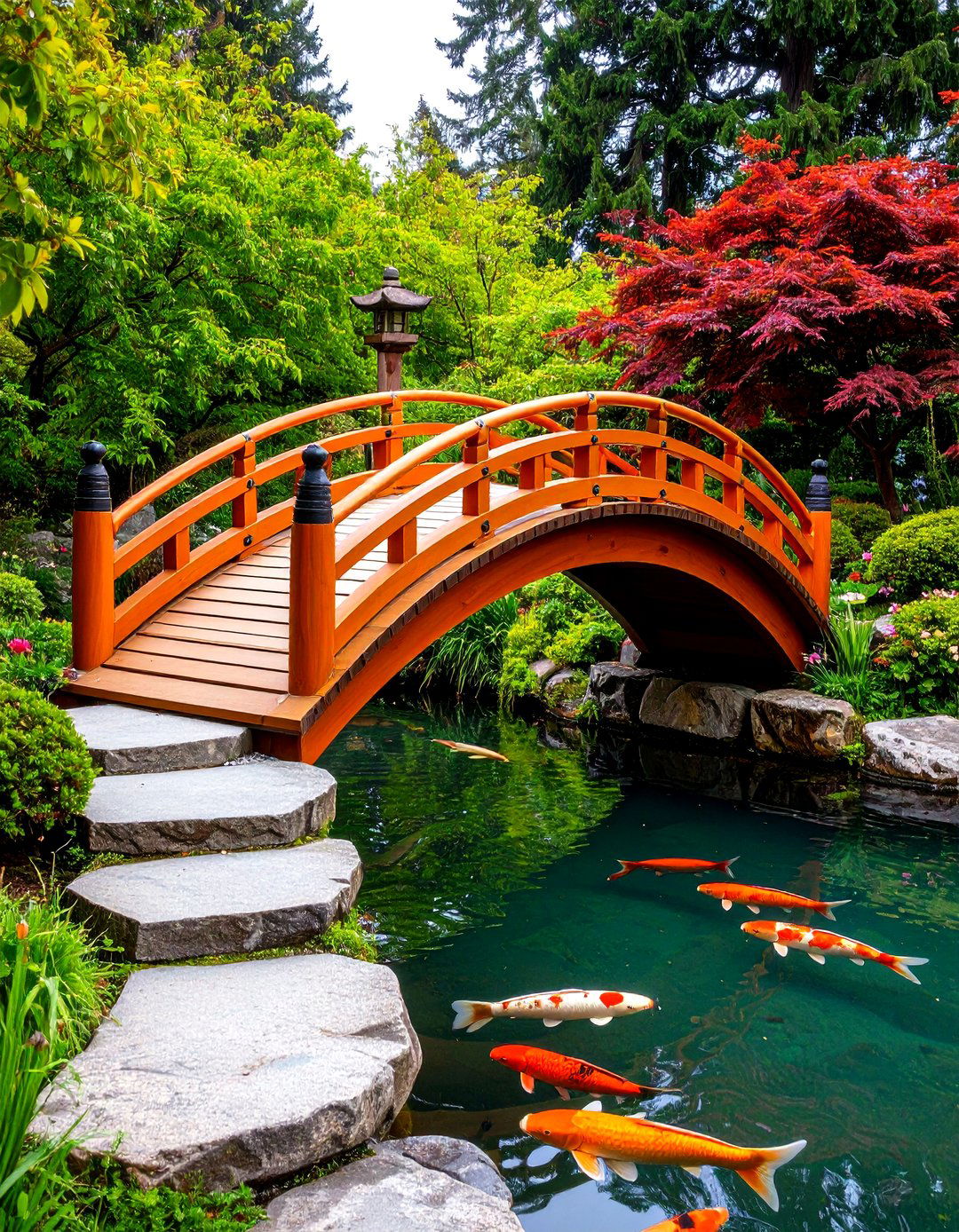
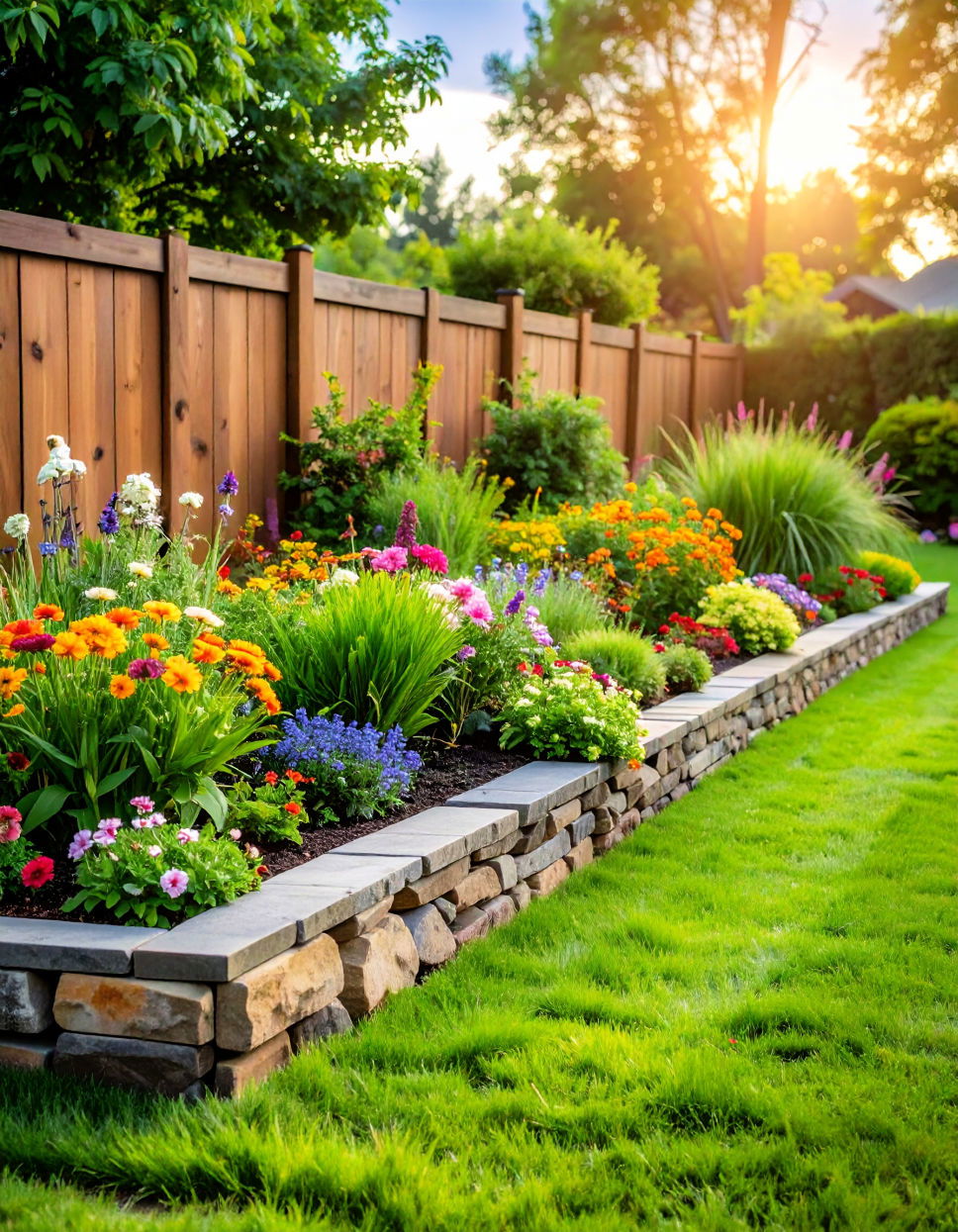
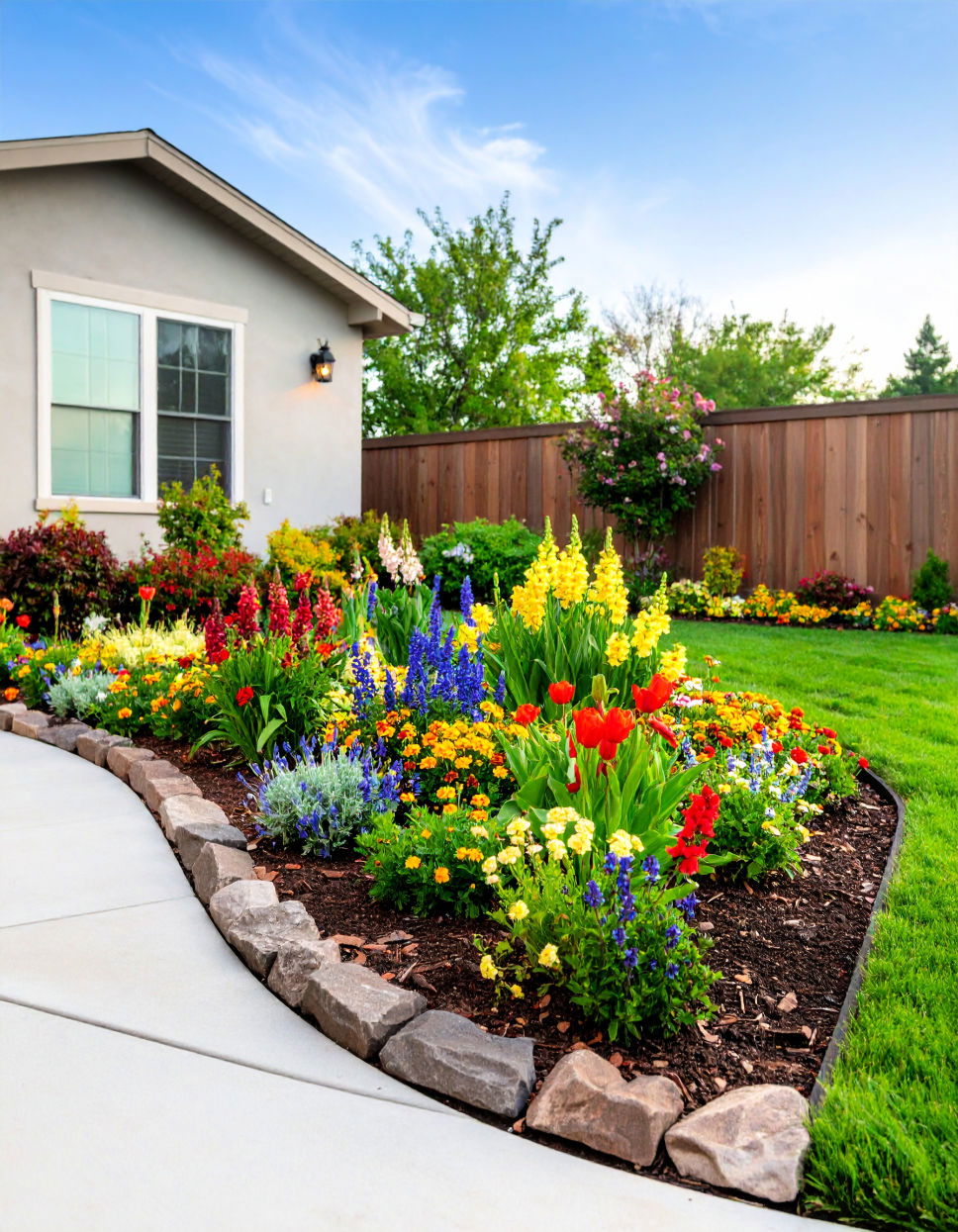
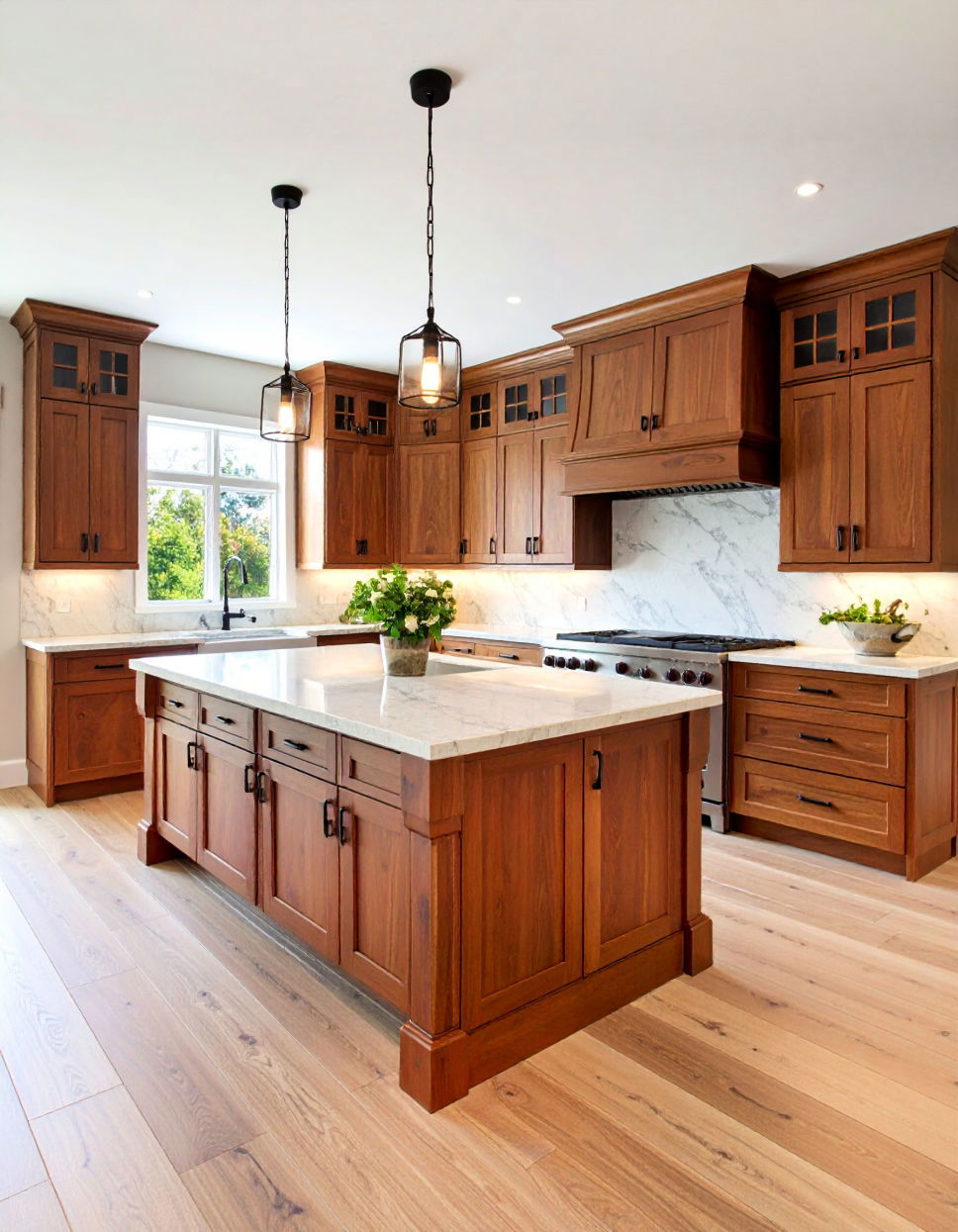

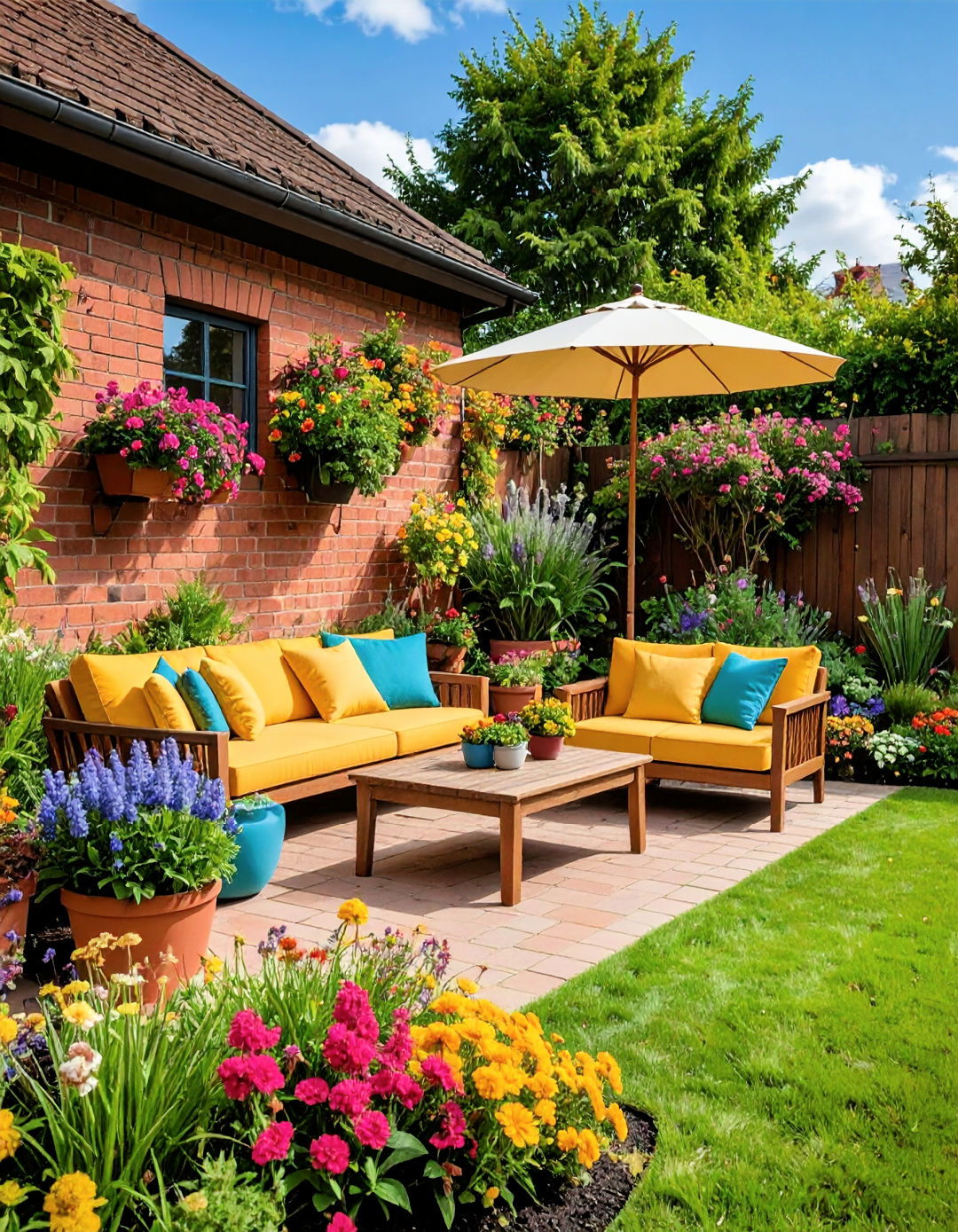

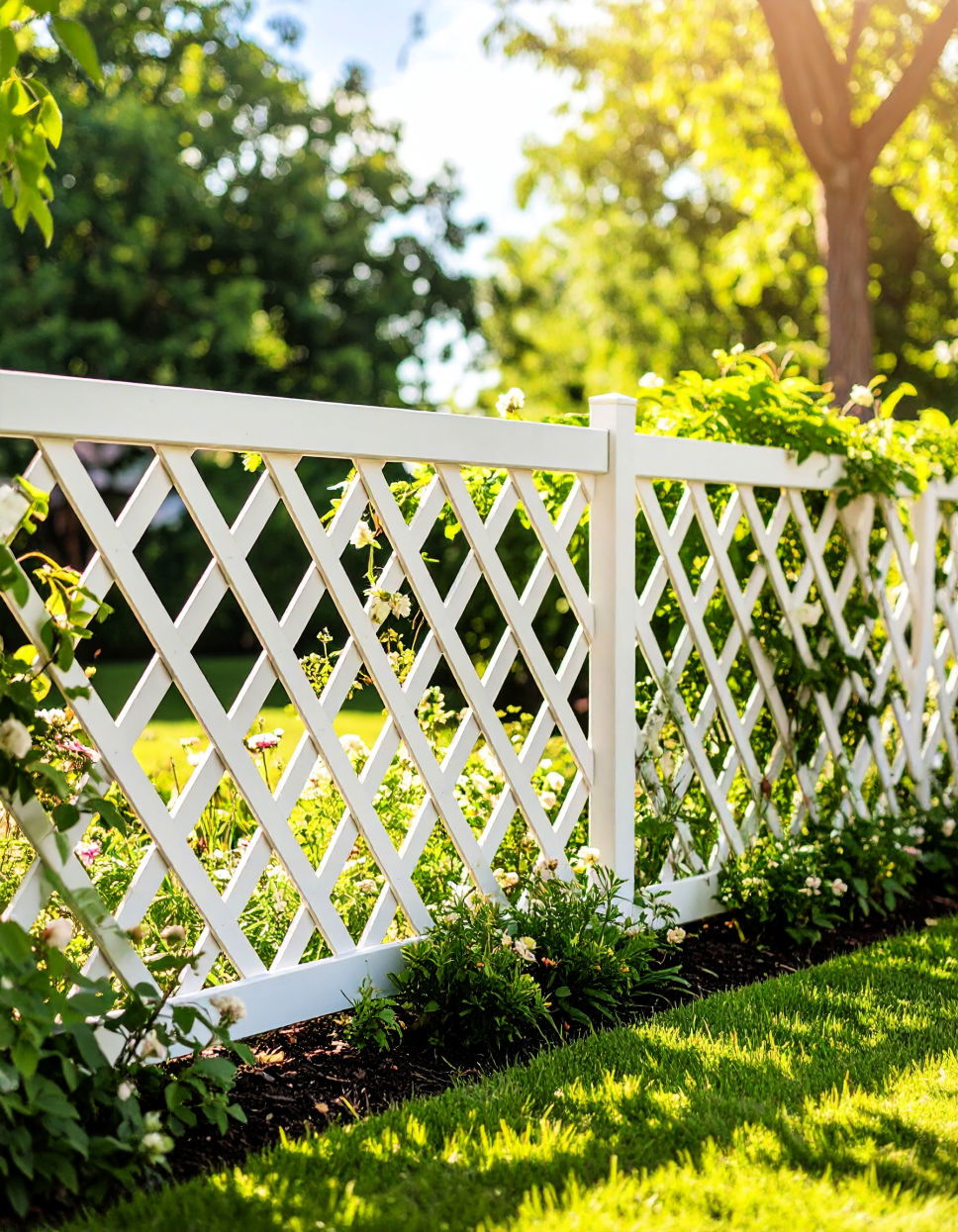




Leave a Reply